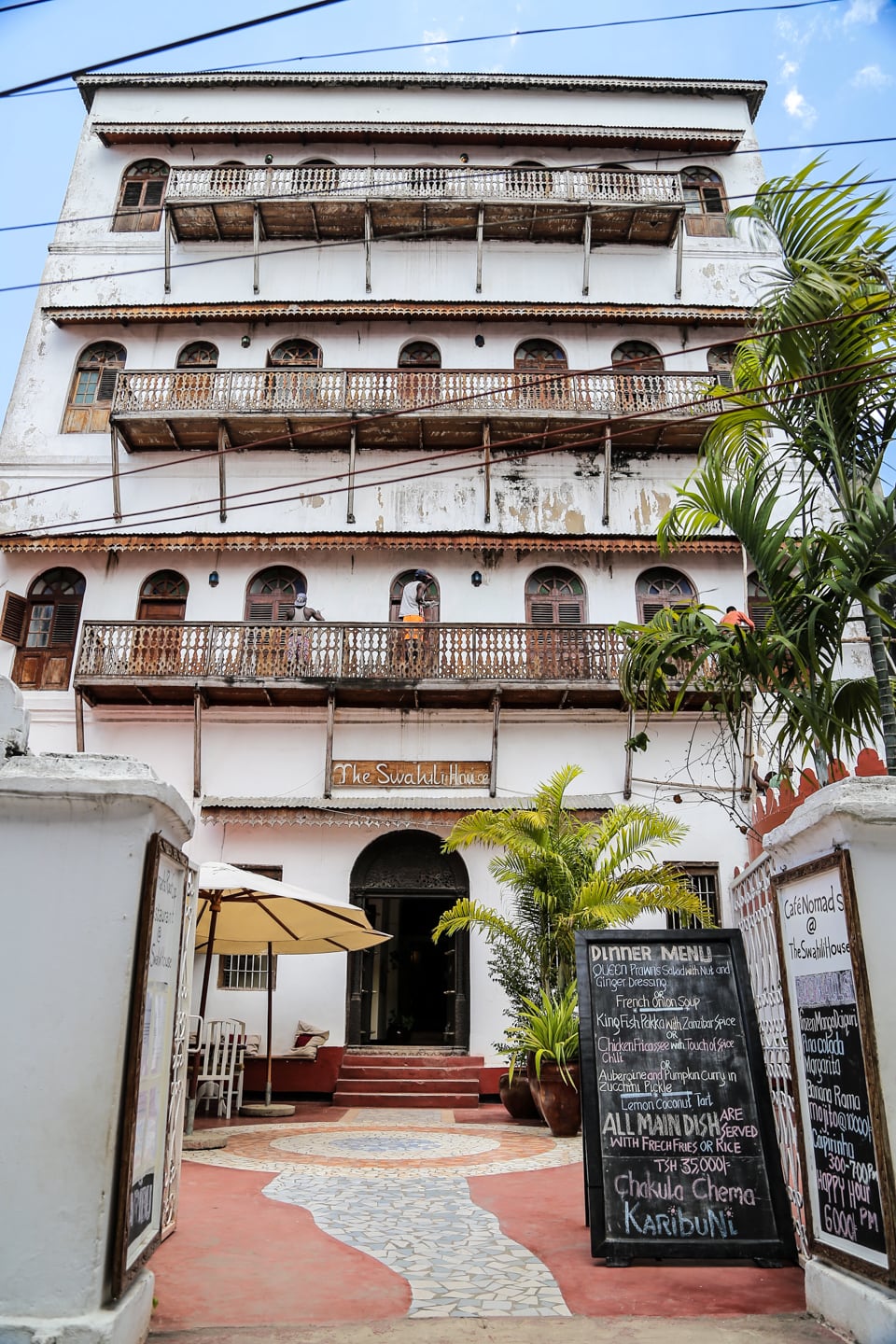
Zanzibar from Above
Shortly after arriving in Stone Town, we highly recommend seeking out the Swahili House hotel and ascending the steep wooden staircase five flights to the rooftop cafe.
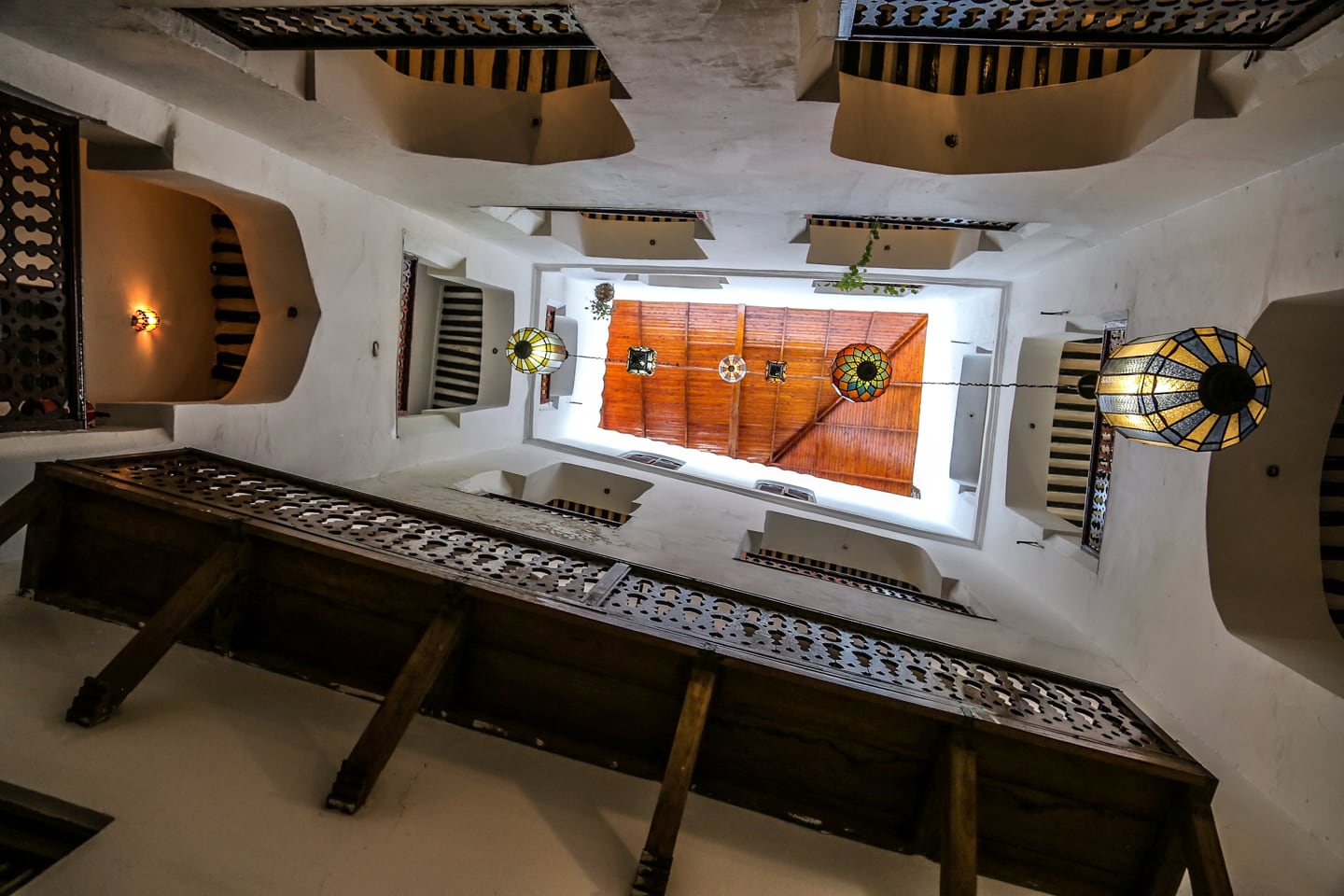
In addition to a good workout, the commanding view from here offers an excellent opportunity to get your bearings and take in the urban jumble of buildings-upon-buildings that characterizes this fascinating city.
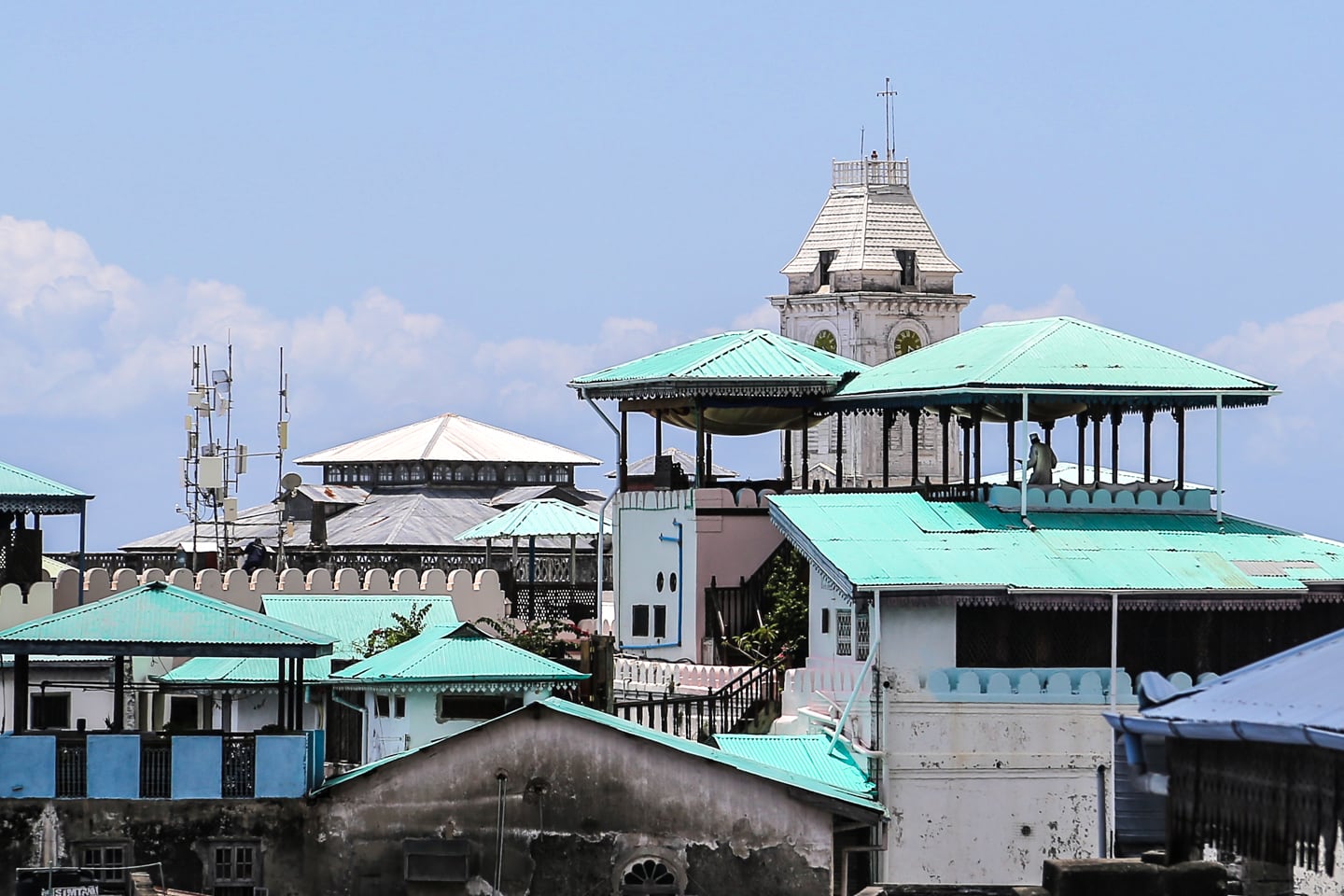
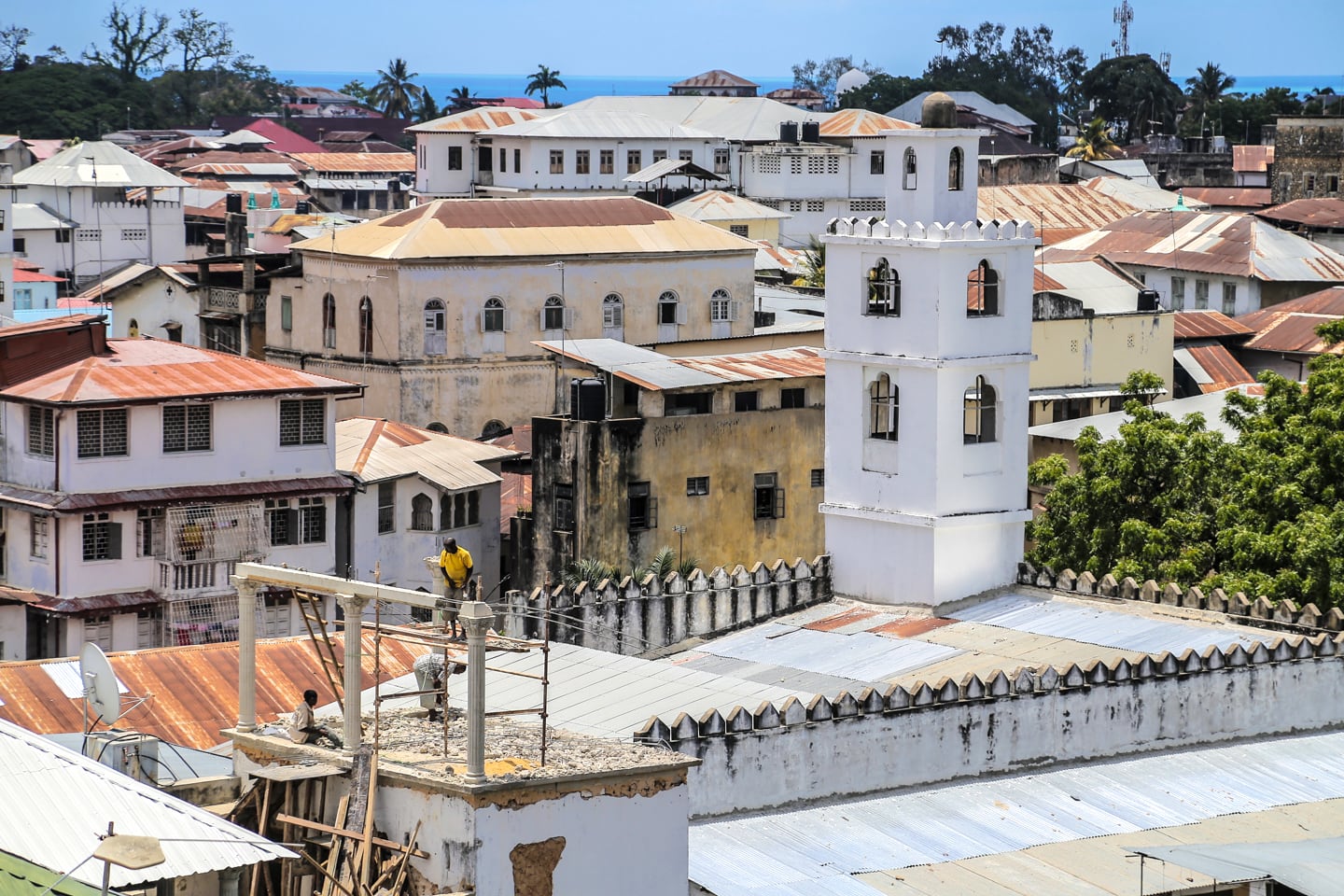
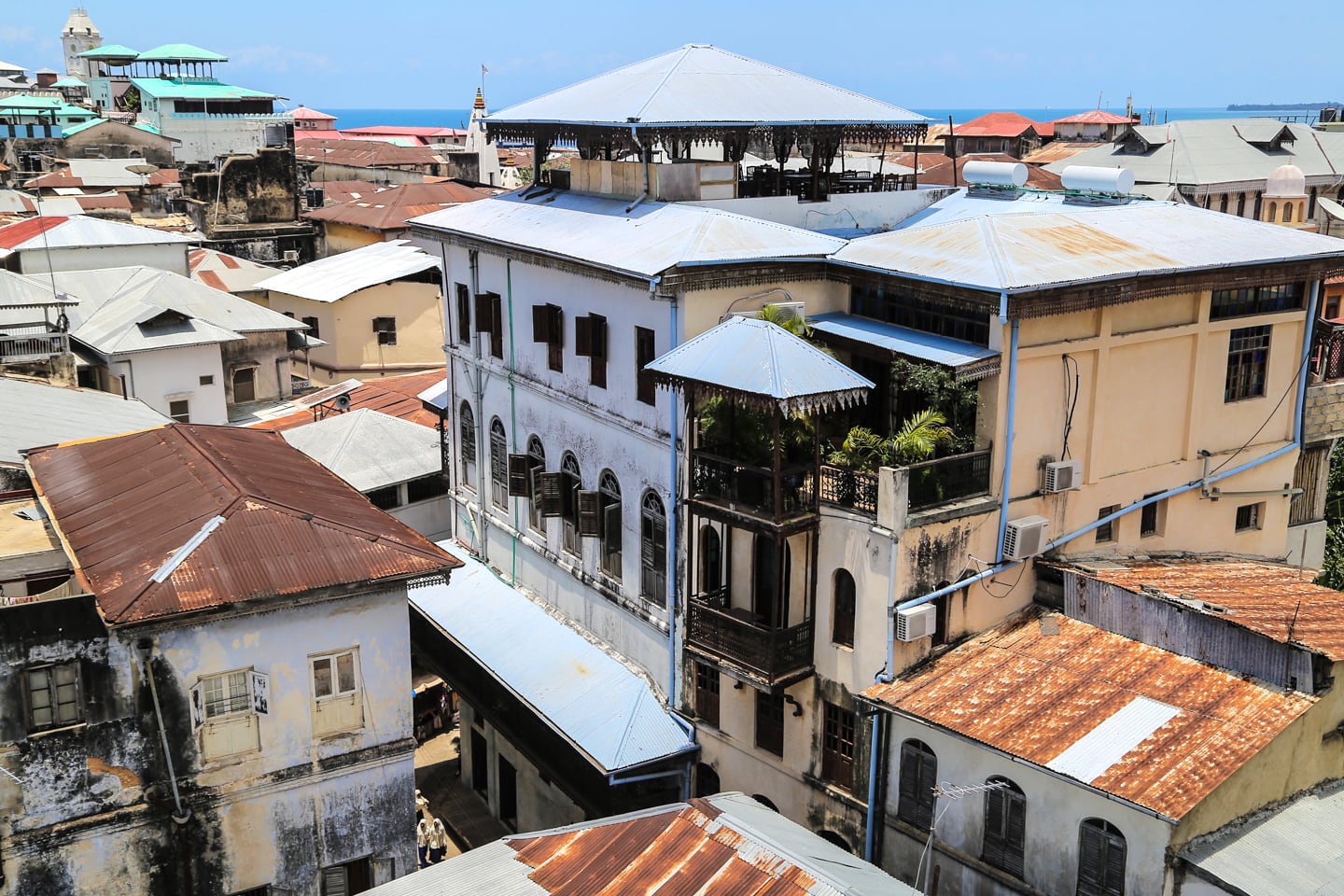
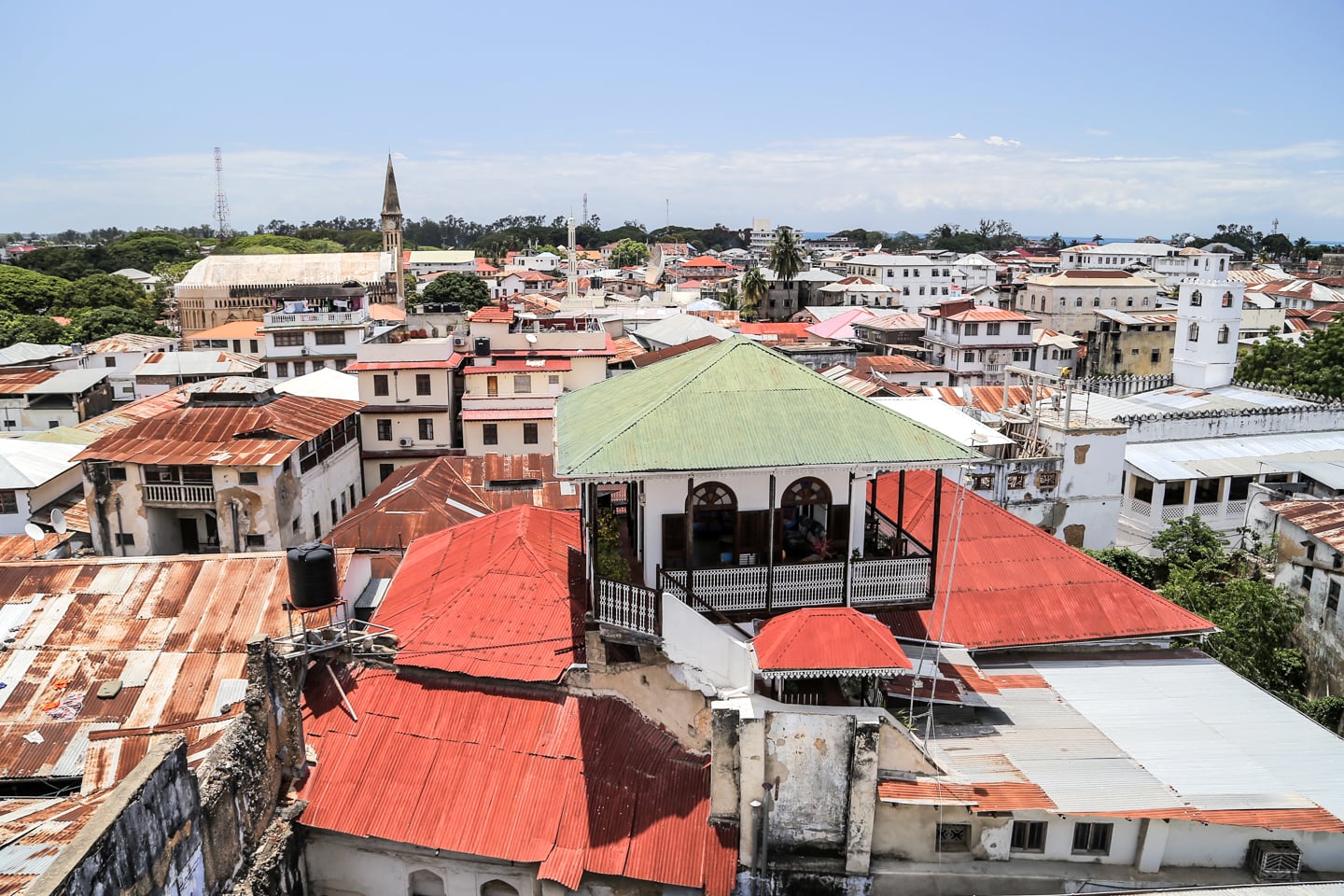
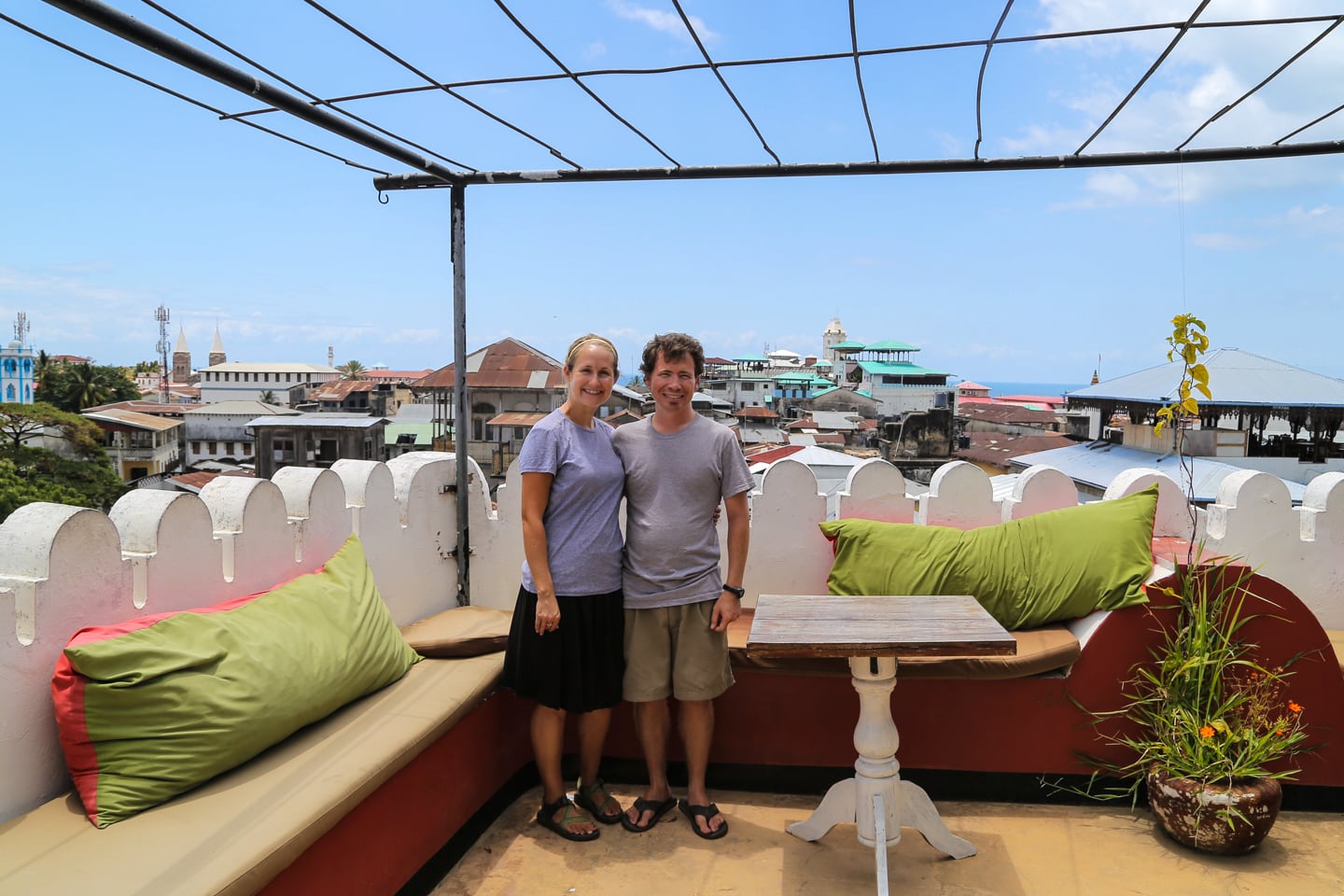
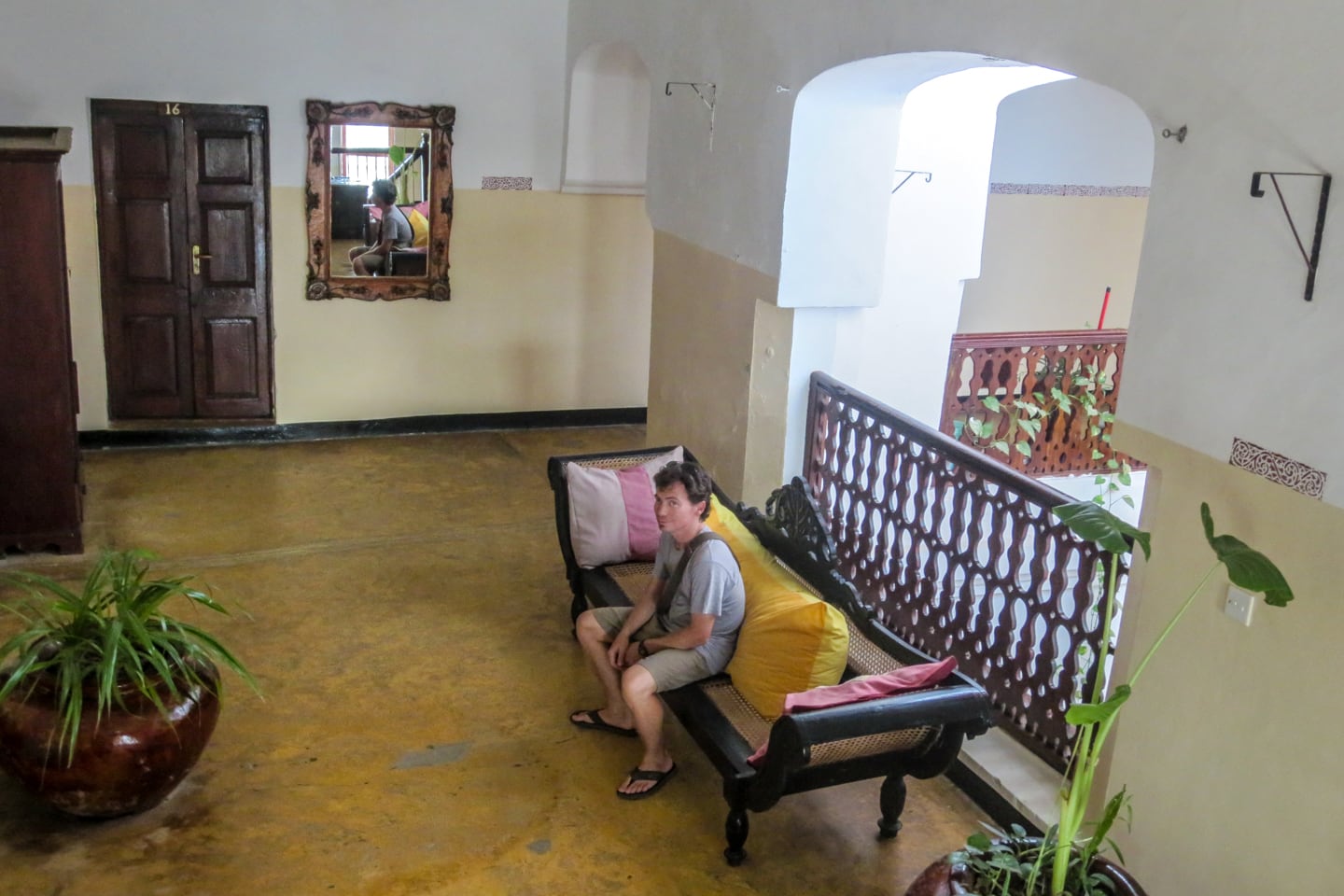
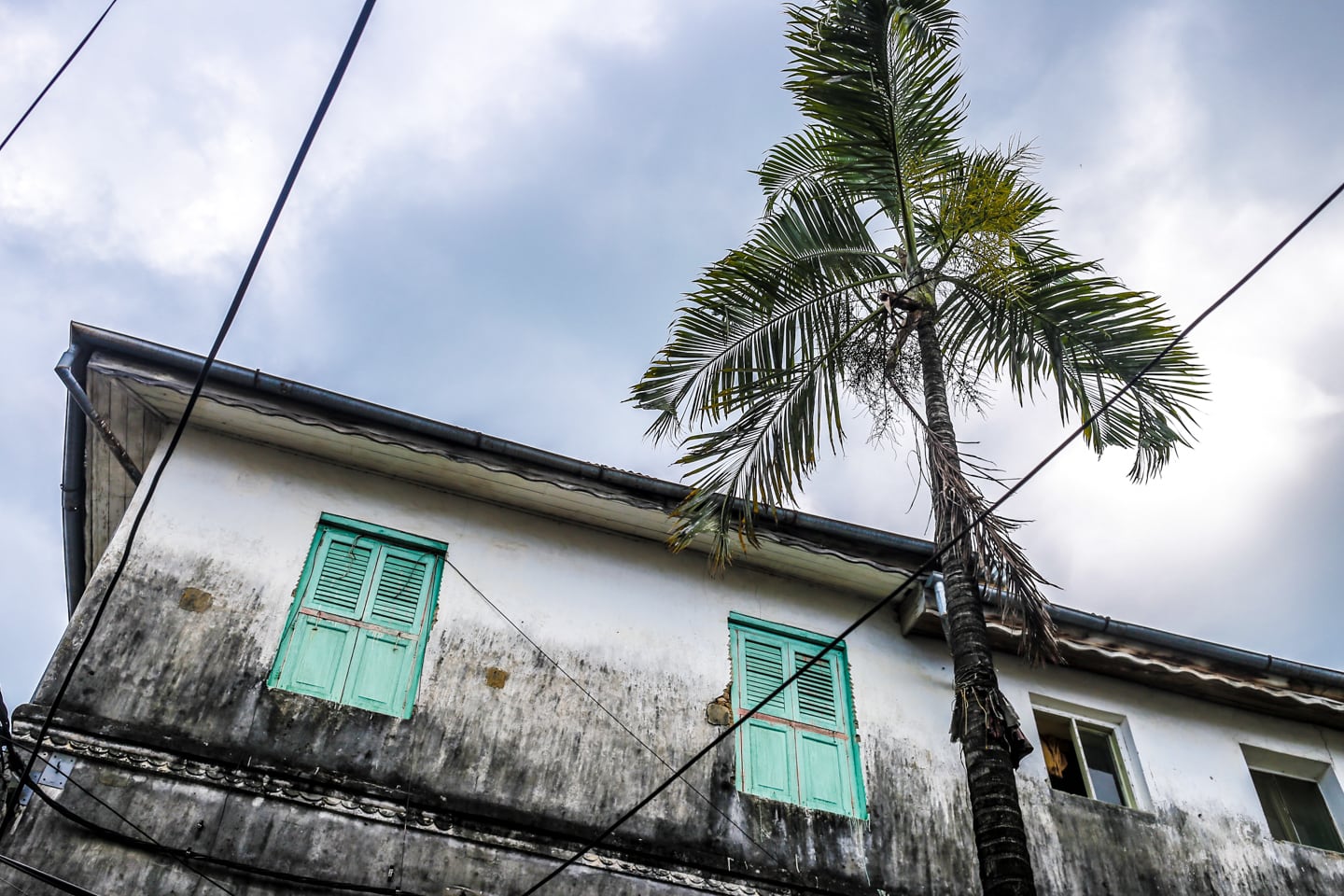
Zanzibar at Street Level
But if you really want to experience the real Zanzibar, you’ll want to explore the city on foot, wandering through the web of narrow alleyways at ground level.
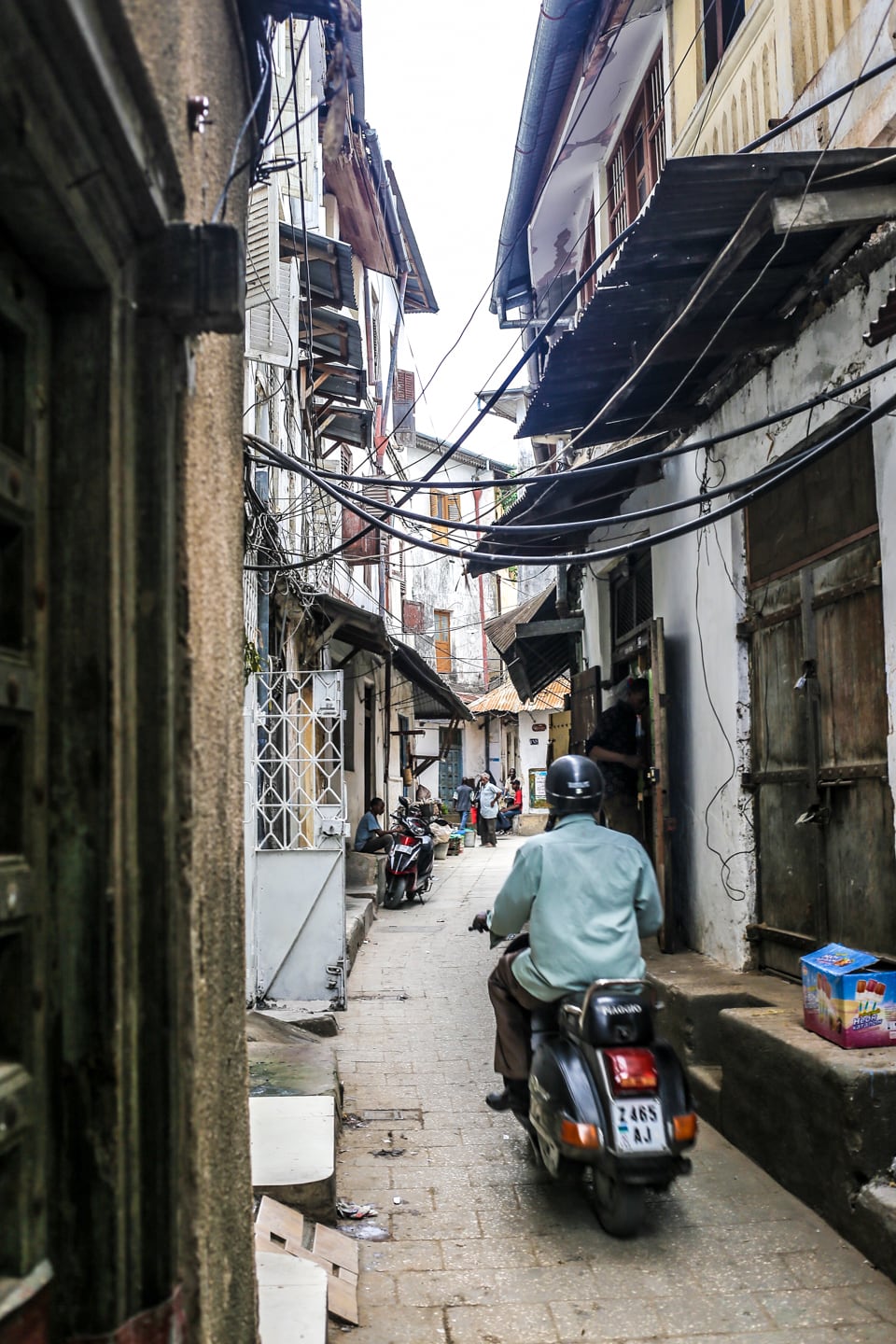
Zanzibar Town reflects a unique and diverse history combining influences from everyone from the Arabs, Persians and Indians, to Portuguese, British and, of course, indigenous African populations.
While the old part of the city sits on an area previously occupied by a series of ancient settlements, the earliest of Zanzibar’s existing historical stone buildings date only as far back as the 1830s and 1840s, when the Sultan of Oman decided he preferred the beaches and women on this side of the pond, moving the seat of his government from Muscat, Oman to Stone Town. Later, in 1861, the island would become its own swingin’ nation for the next 103 years until the Sultan’s fun ended with the unification of Tanganyika and Zanzibar (as today’s “Tanzanian”) in 1964.
Today, while motorcycle whiz through the narrow alleyways and tourists crowd some of the major thoroughfares in great numbers, one still gets the sense that the essential character of the Old City has changed very little over time.
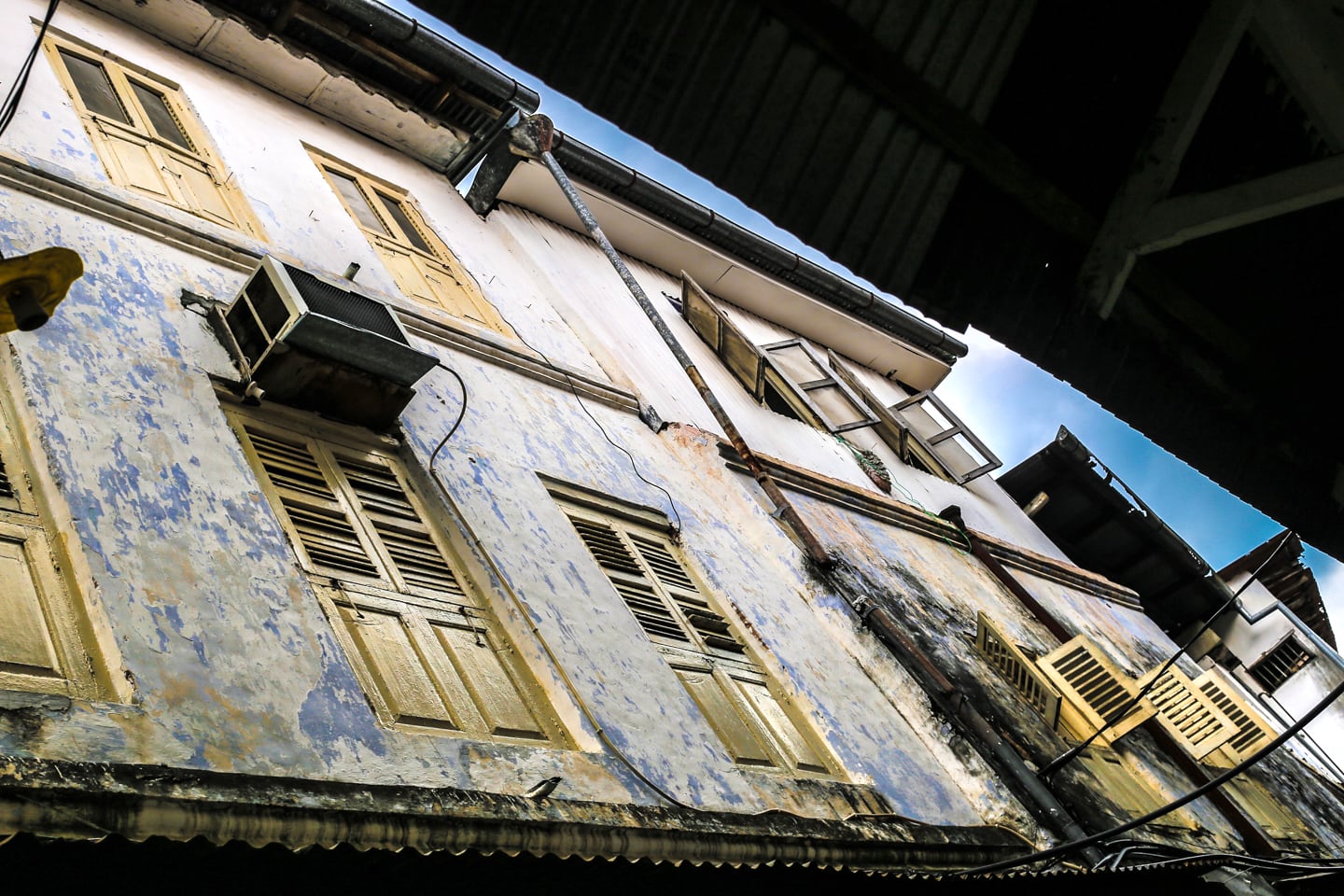
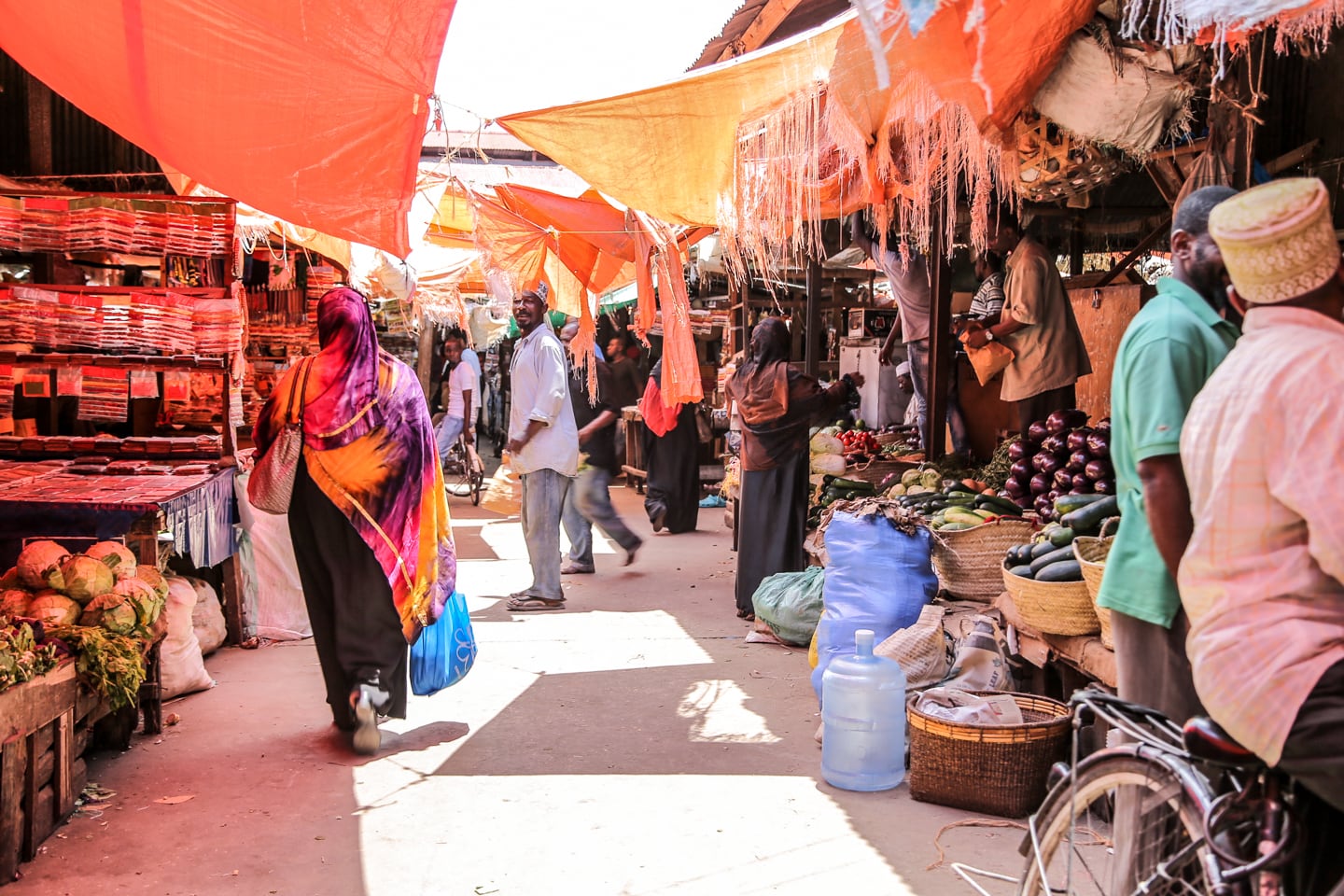
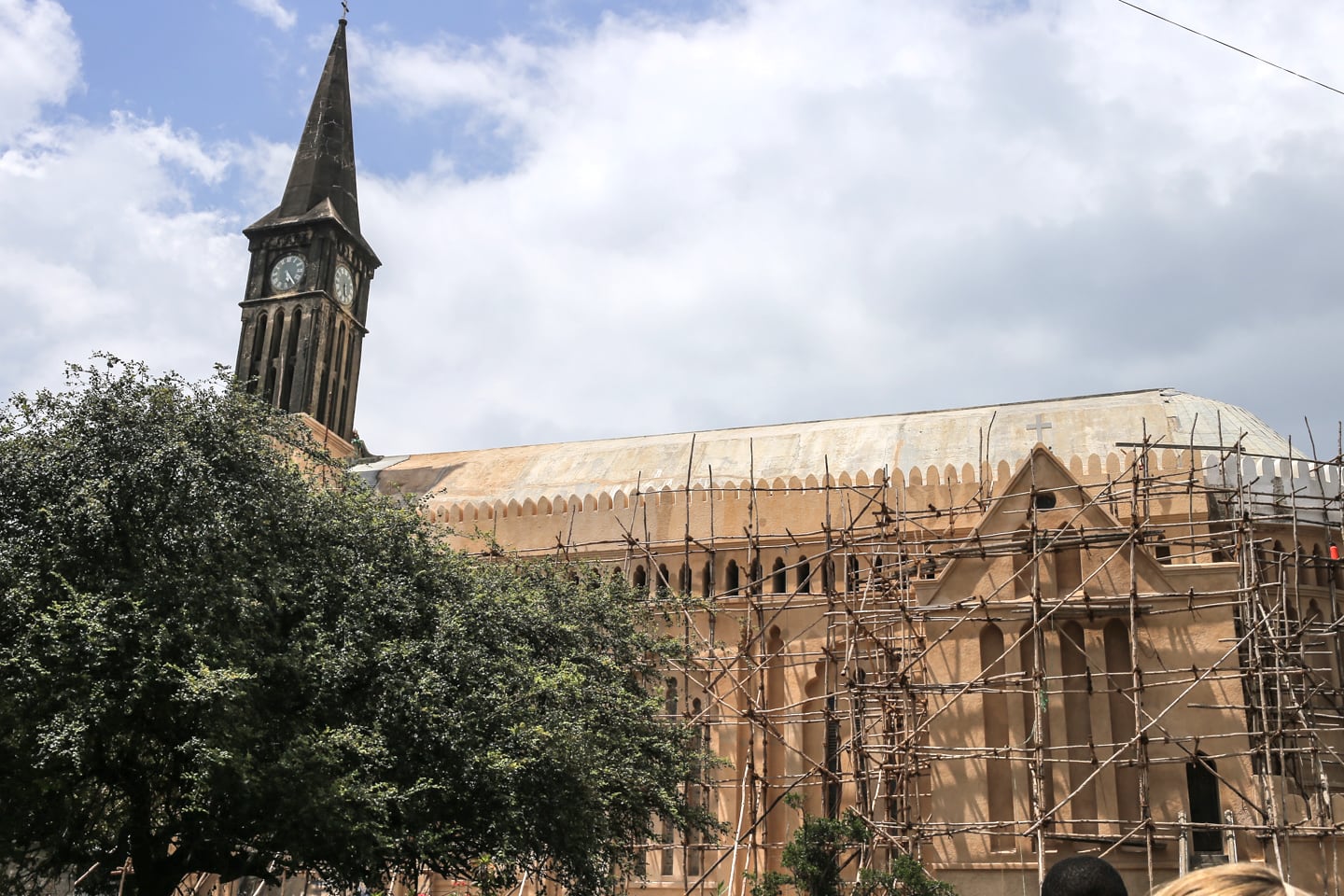
The Sultan’s 100 years of rule may have been a raucous good time for some, but, as you might expect, it certainly wasn’t a party for everybody. One of the biggest tourist draws in Zanzibar, the Anglican cathedral of Christ Church, currently under restoration, sits atop a large area of the city center which was once home to Zanzibar’s largest and most infamous slave market. The site of the large church was purposefully chosen by the Anglican community and abolitionists to meaningfully mark the end of slavery in 1897.
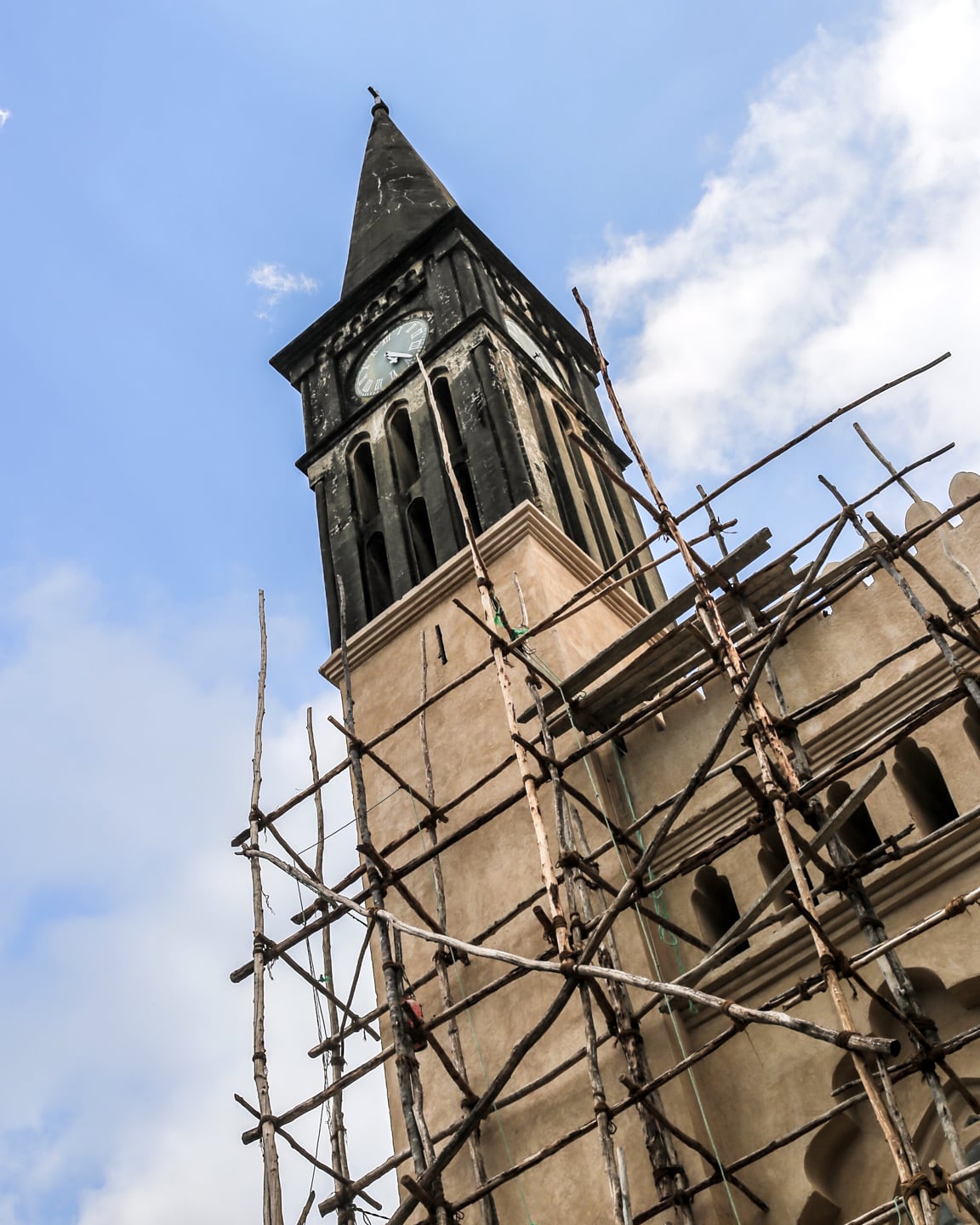
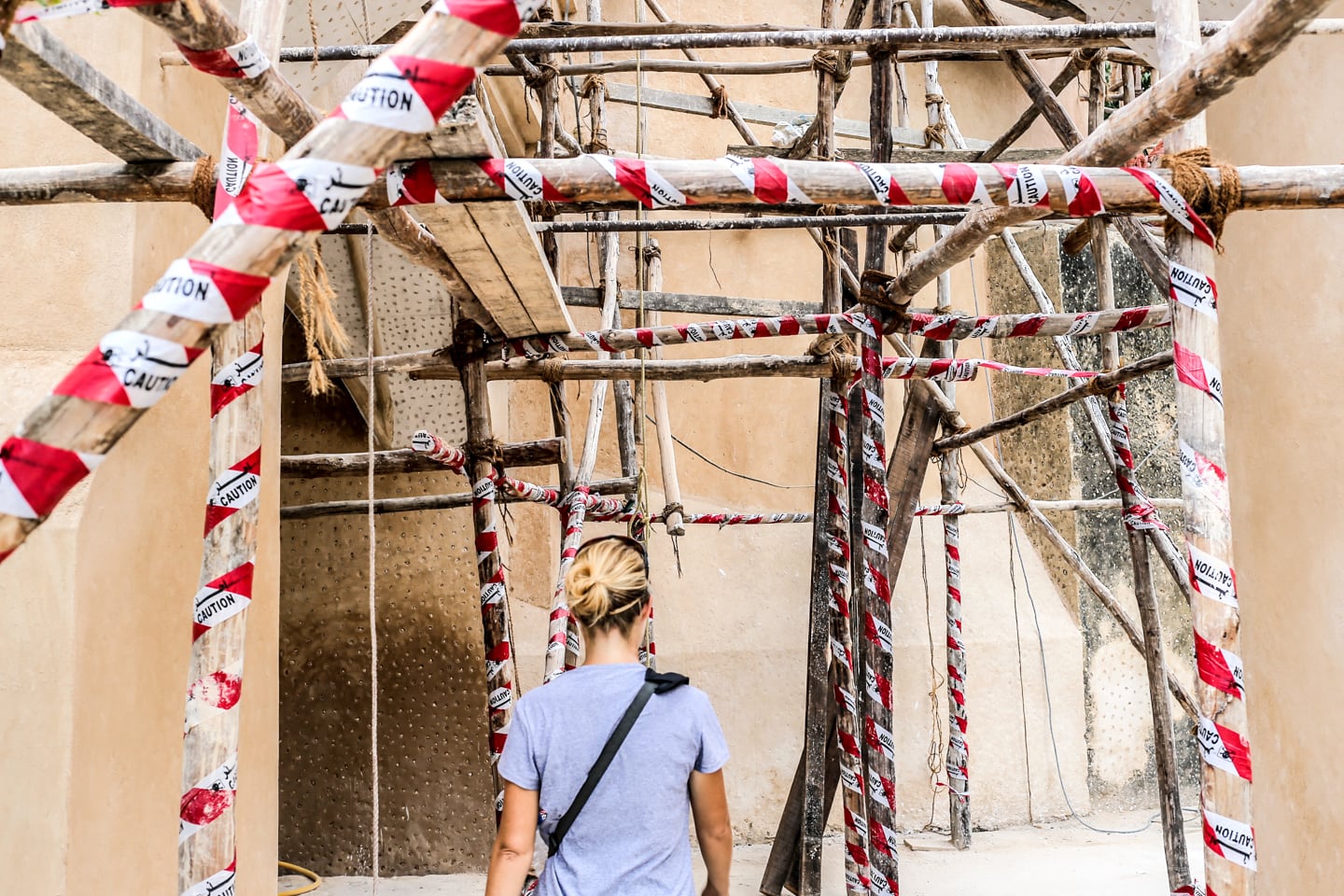
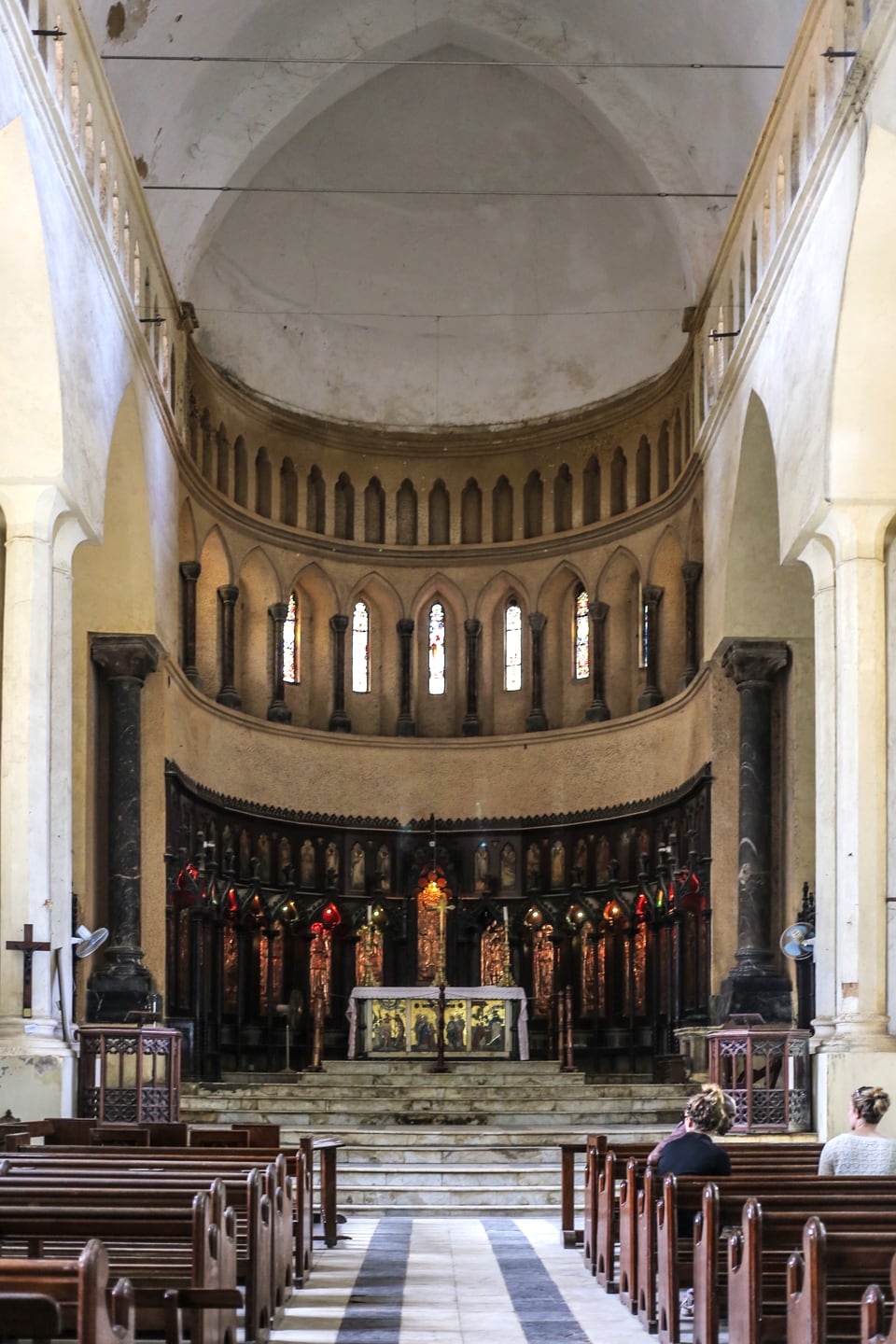
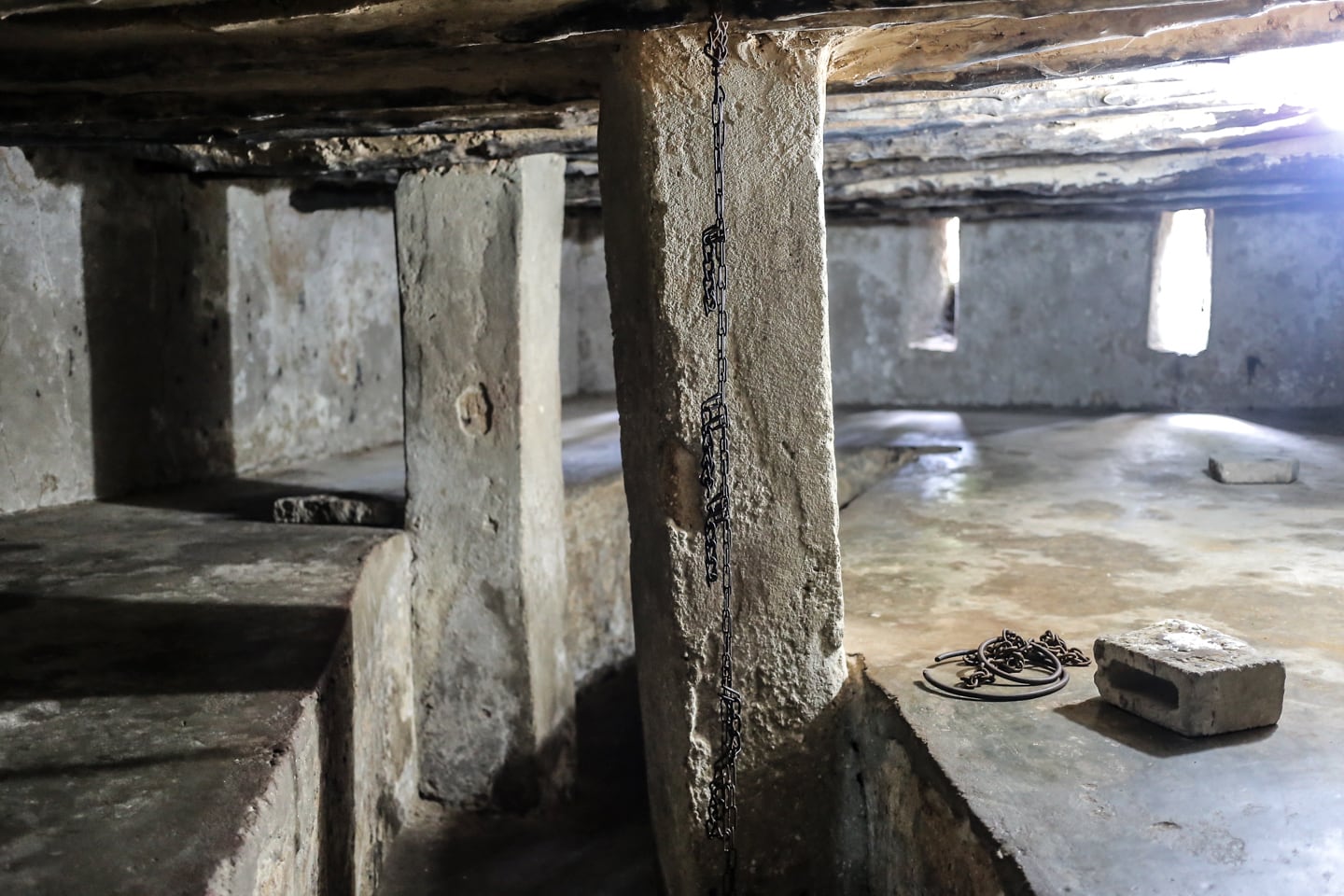
Yet, even today, remnants of the island’s dark history remain. Chief among them is this tiny holding room in the basement of an outbuilding, where dozens of female slaves and their children were held in shackles for long periods of time, waiting to be sold at market (the lower part in the middle was the designated “toilet” area, where the sewage sat for hours waiting for the tide to flood the chambers and wash the waste out to sea).
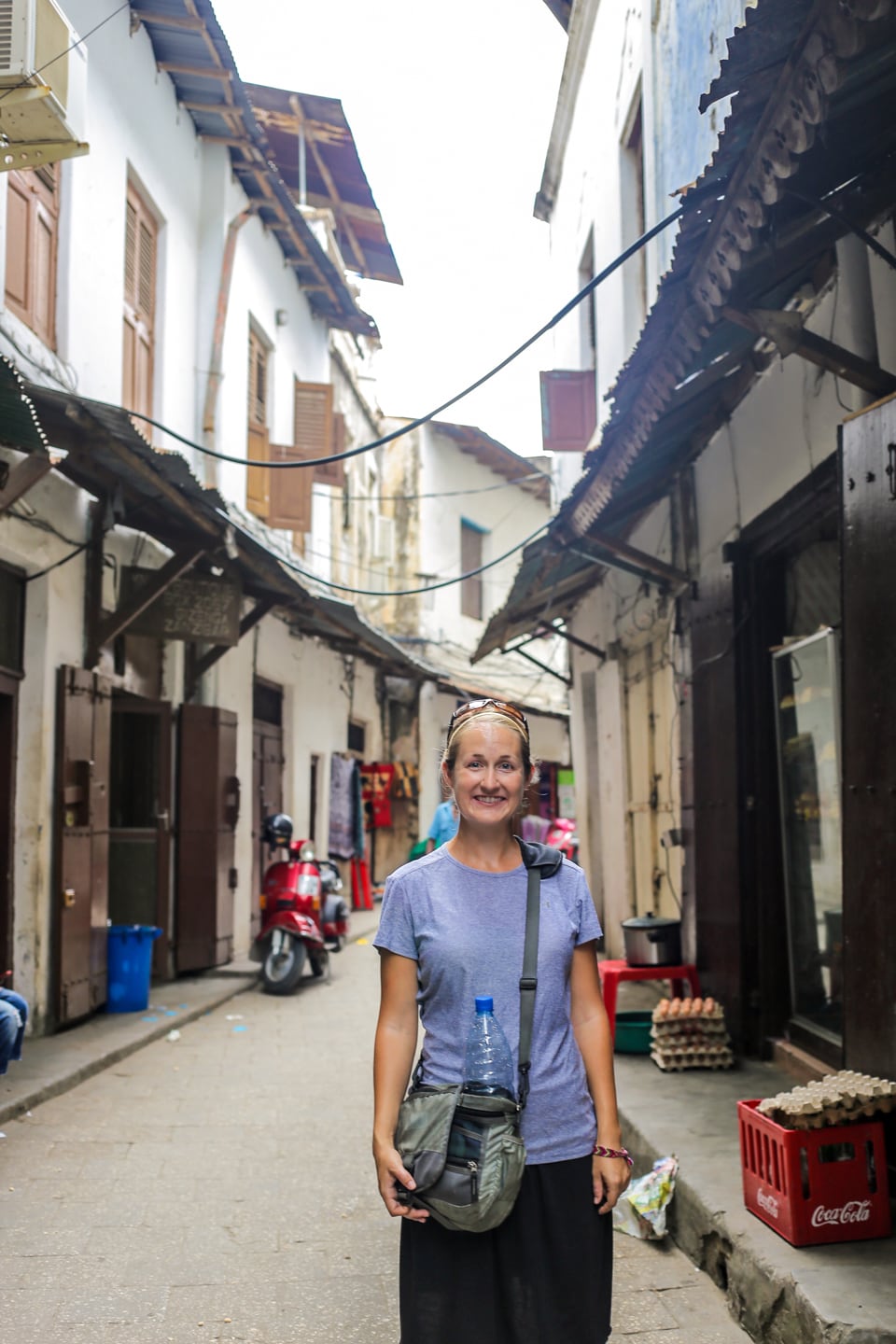
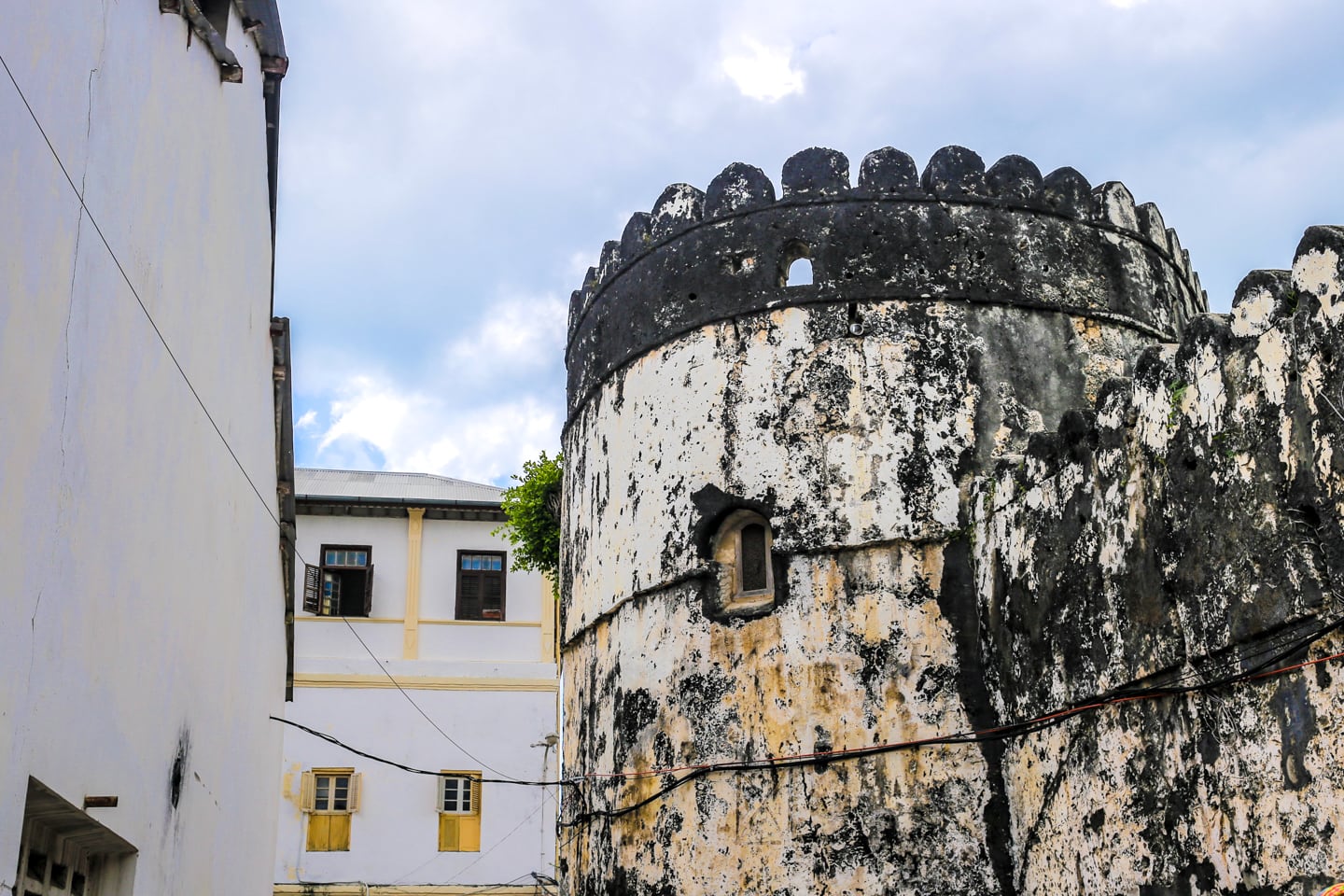
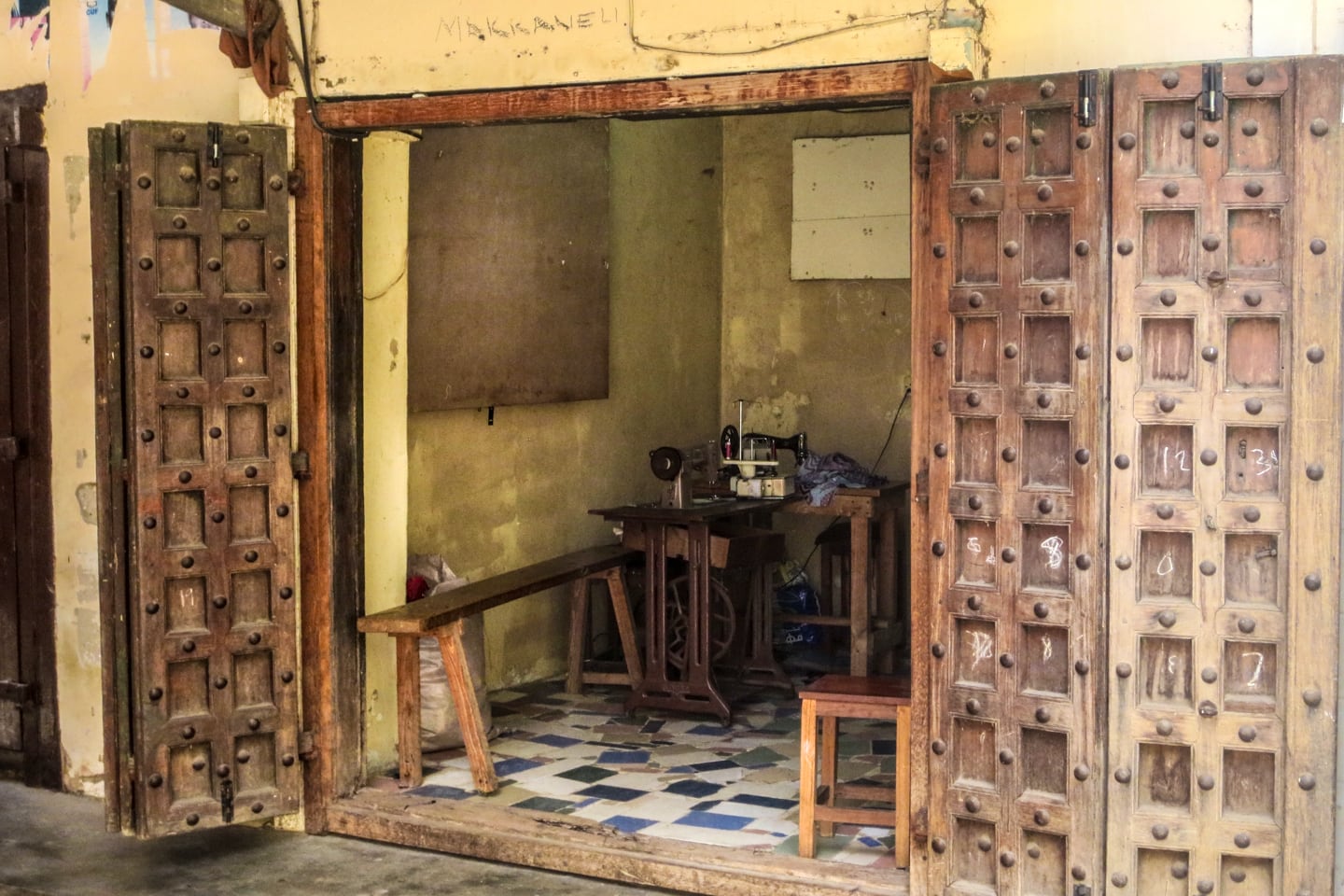
One of the major goals I had for this trip was to buy a really fly capulana (sarong) in Mozambique and have some comfy beach pants made. Well, as you may recall, I did secure said material in Maxixe, but did not have enough time in Morrumbene to take it to my old tailor, Jose (‘J’ makes a ‘J’ sound in Portuguese, not ‘H’ like Spanish), who used to make fantastic shirts and pants for me, or my other tailor, also Jose, who also used to make fantastic shirts and pants for me. Unfortunately, accessing the talents of the two Joses was not to be, so I had to settle for getting this accomplished somewhere else.
We were walking down the street (with my capulana, of course — which I brought everywhere…just in case) and happened to spot this little tailor shop. I ran in and made friends with Nordin, who did not wish to be photographed. However, he did suggest I take a picture of his shop (and I even marked it on my phone GPS map), as it’s not easy to find places in Stone Town. Nordin measured me and I explained the best I knew how in English, pantomime and very poor Swahili that I wanted the pants baggy, roomy, lots of air flowing through, woosh, woosh! I felt it was essential I made this point as skinny-pants seemed to be all the rave in Tanzania (and the rest of East Africa, for that matter — Brooklyn and Portland, eat your hearts out!). Nordin told us to check back in a few days. Cross your fingers…

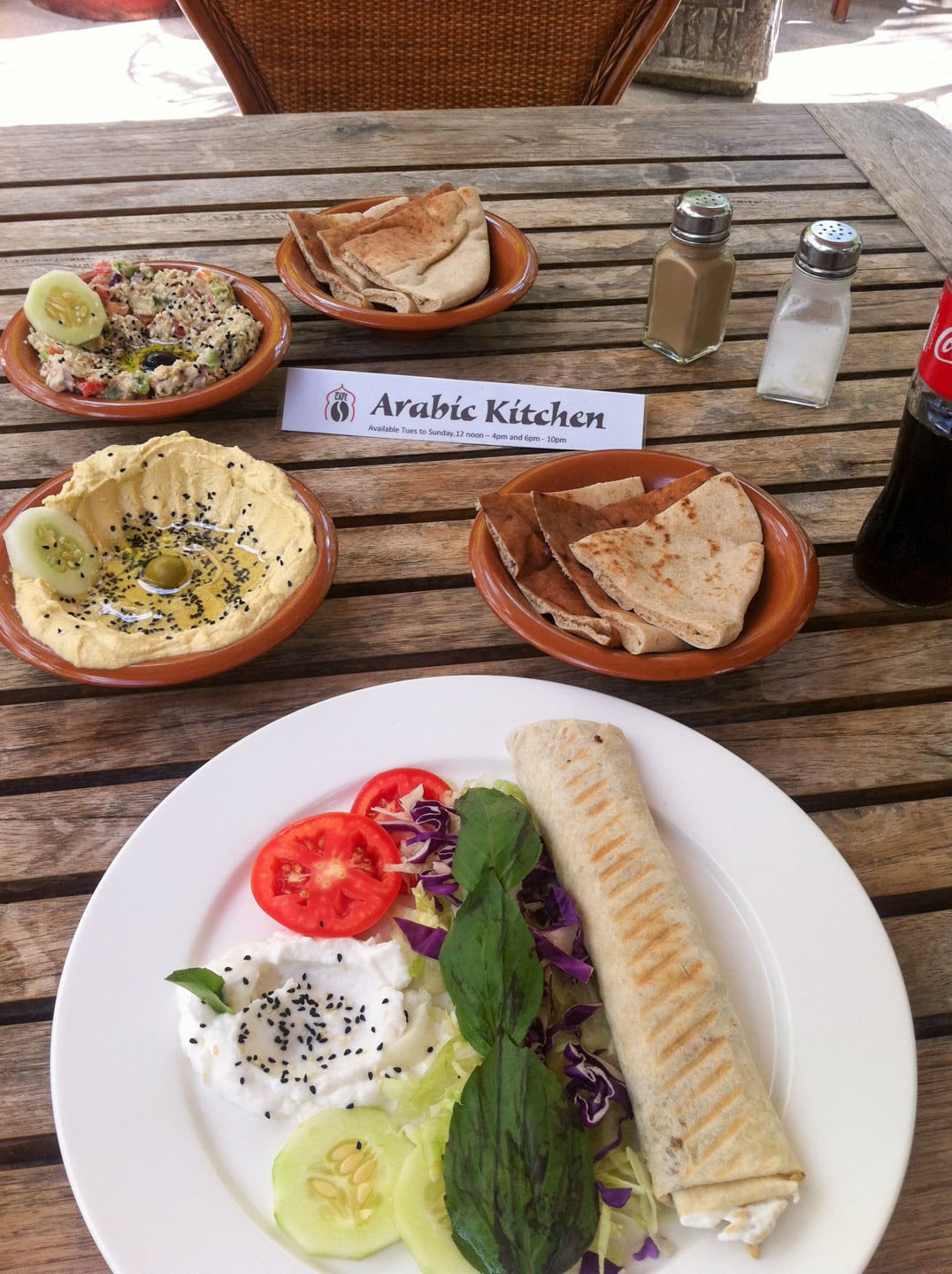
I’m a sucker for Lebanese food. Love it. Love it. Love it. My favorite Lebanese restaurant in Maputo had since closed, so you might imagine my excitement when we found Lebanese in Stone Town! We definitely went a little overboard this particular day, with the chicken shawarma AND hummus platter AND babaganoush…but it was totally worth it (despite the low-level skirmishes that later waged in our abdomens as we spent the afternoon wandering the alleyways of Zanzibar).
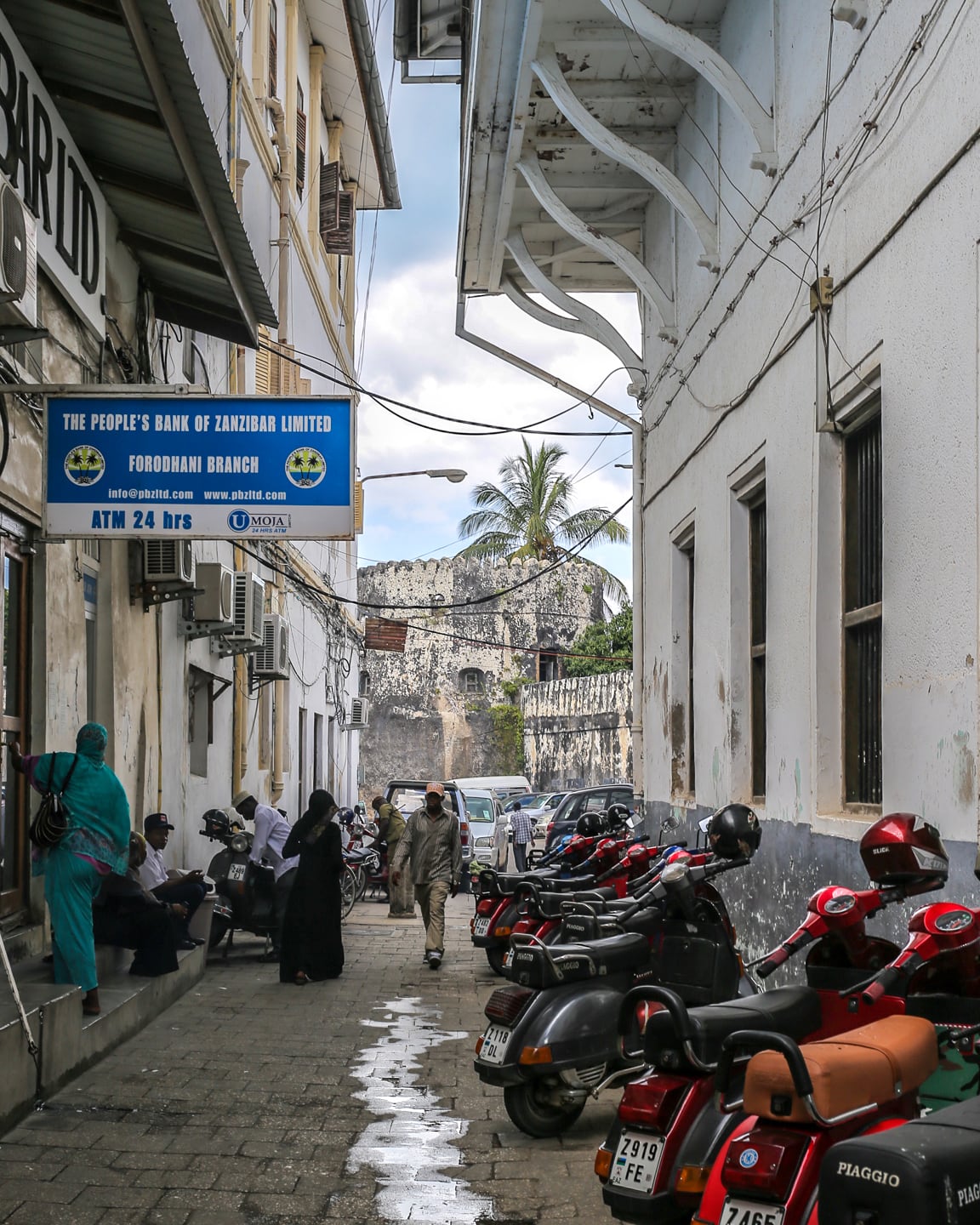
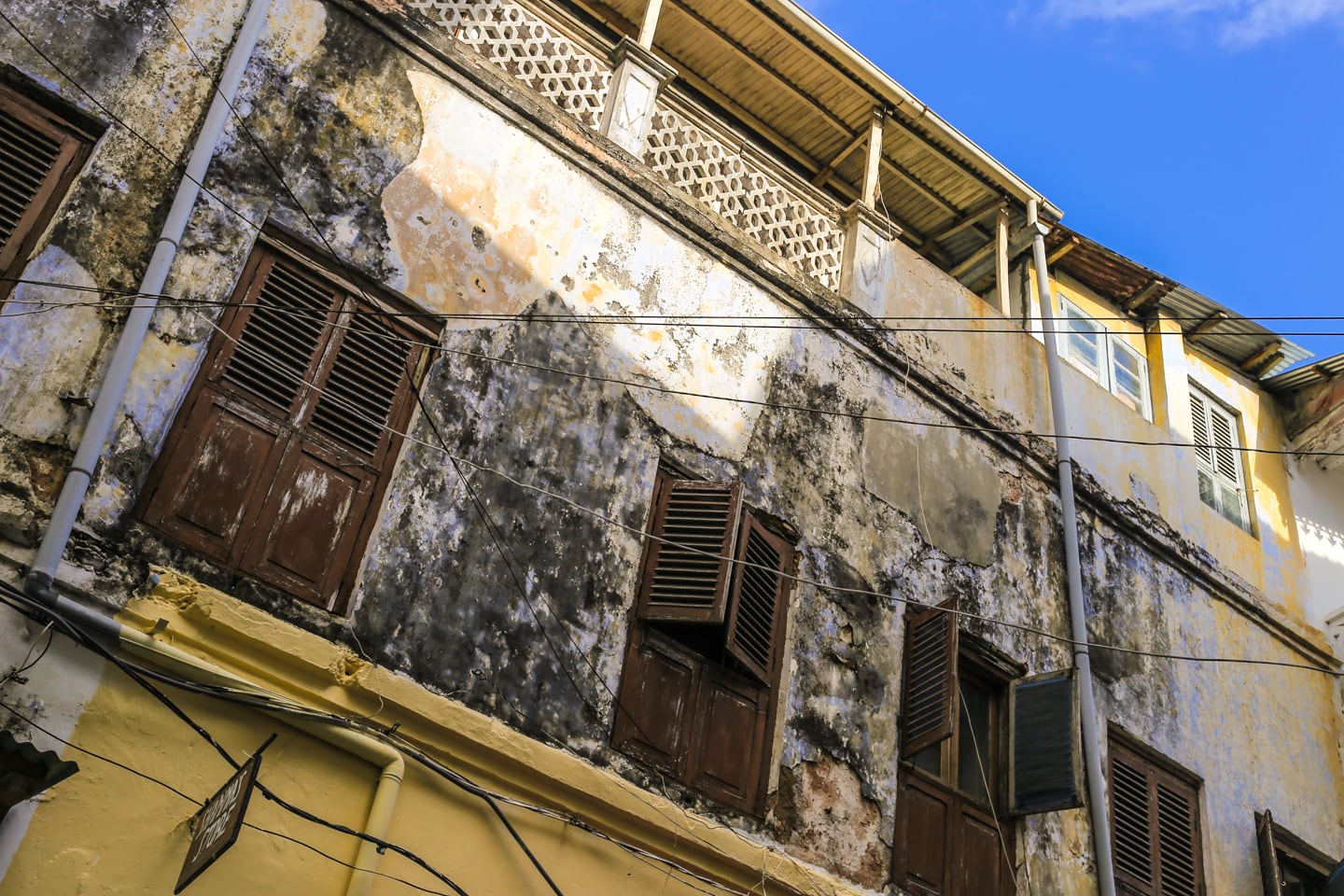
Oh, and an update on Lori’s job application to Handicap International. She was due to have her final interview during our stay, which, again, presented all sorts of fun challenges in trying to prepare for an important interview in a place like Stone Town.
For one, the internet at our guesthouse was not functioning — and neither was the internet at the handful of places we knew had internet around the time of the interview. No problem, Lori still managed to inform HI (by carrier pigeon) that they’d have to do a phone call. But minutes before the interview a storm blew in and messed up the cell phone service. Lori managed to get network by bending over backwards off our veranda and catching the signal through a two inch gap between two nearby buildings.
However, we had just acquired our Tanzania SIM card days earlier and hadn’t confirmed that we could receive incoming calls or that the phone number Lori gave HI was actually ours (granted, we were 95% sure, but that doesn’t cut it for a job interview). So, 30 seconds before the call, Lori raced down to the ground floor to have the front desk try calling the phone…but our phone didn’t get network down there, so Lori had to run back up, bend over backwards and hold her hand out. Still nothing. Still nothing. Still nothing. No signal. Then the phone rang to life — it’s Handicap International!
Tune in next time to find out how my beach pants turn out! (…and maybe Lori’s interview, too).
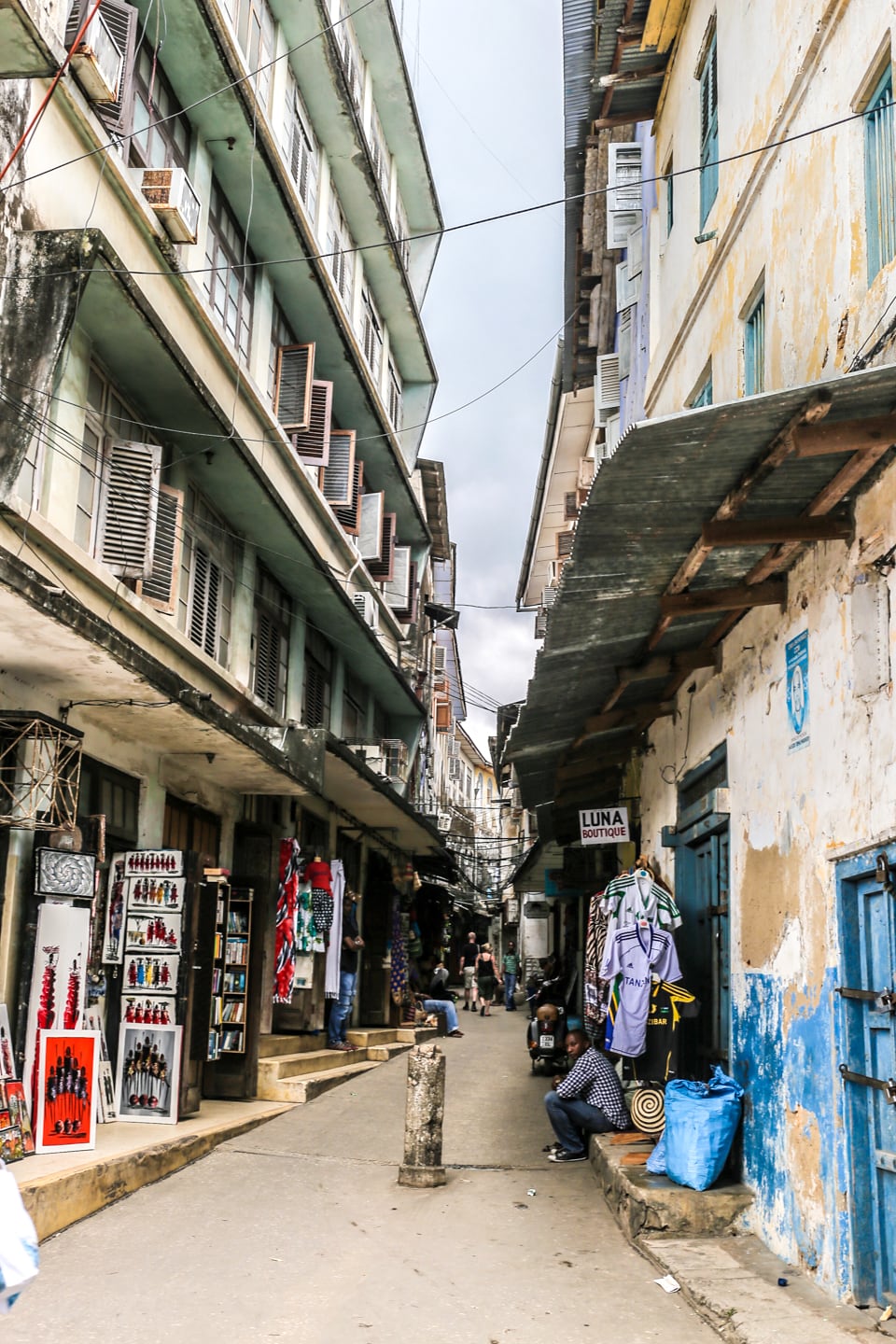
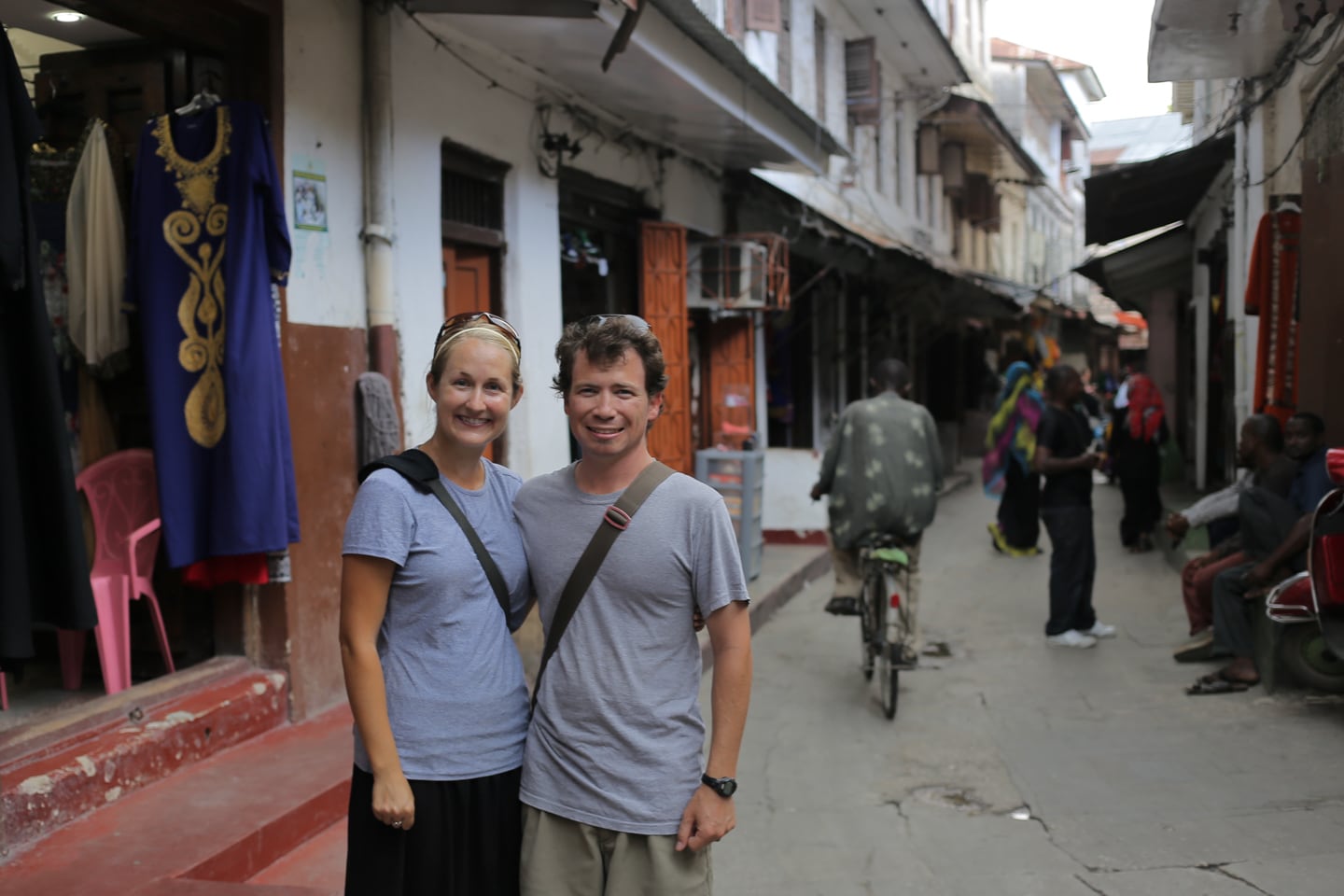
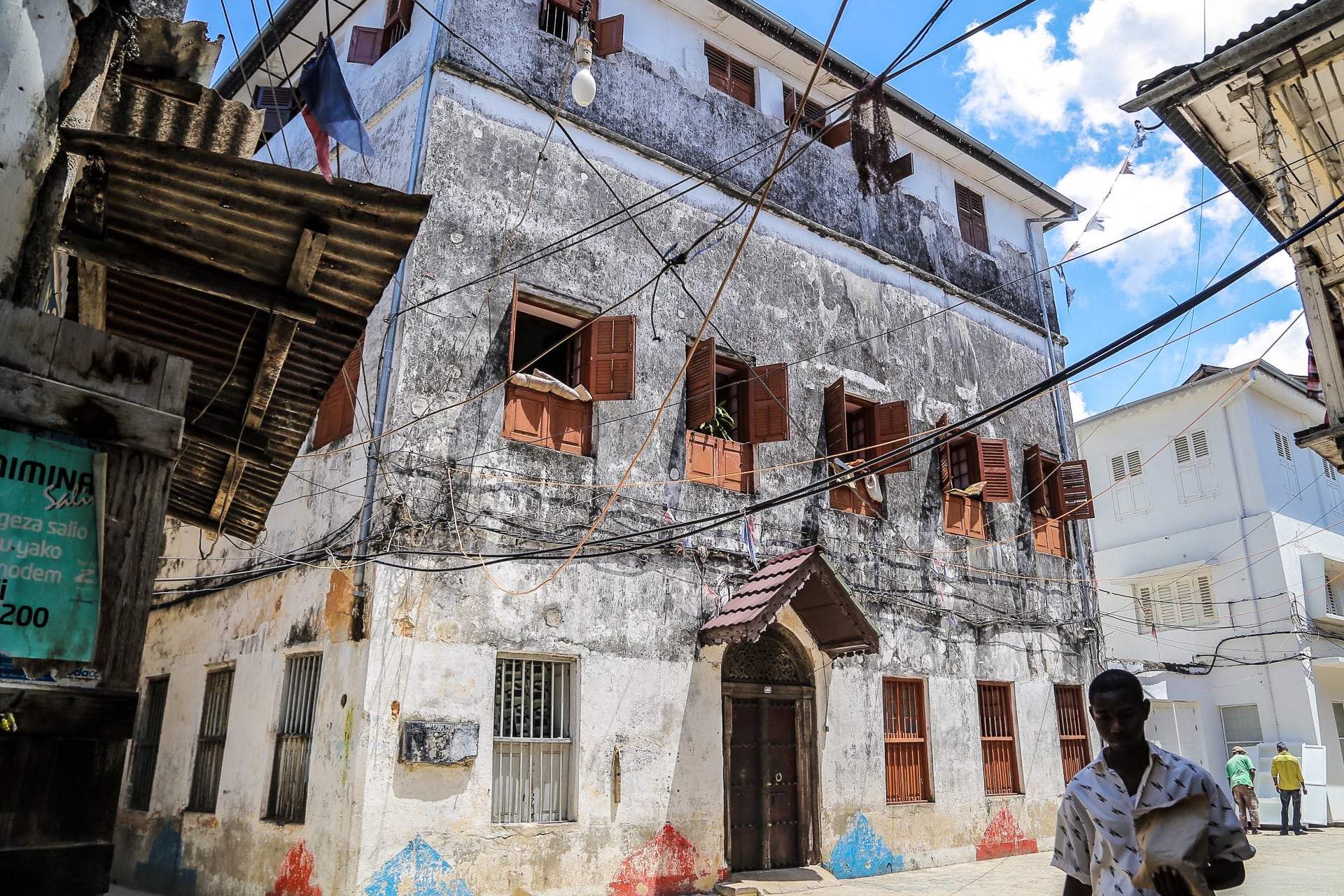
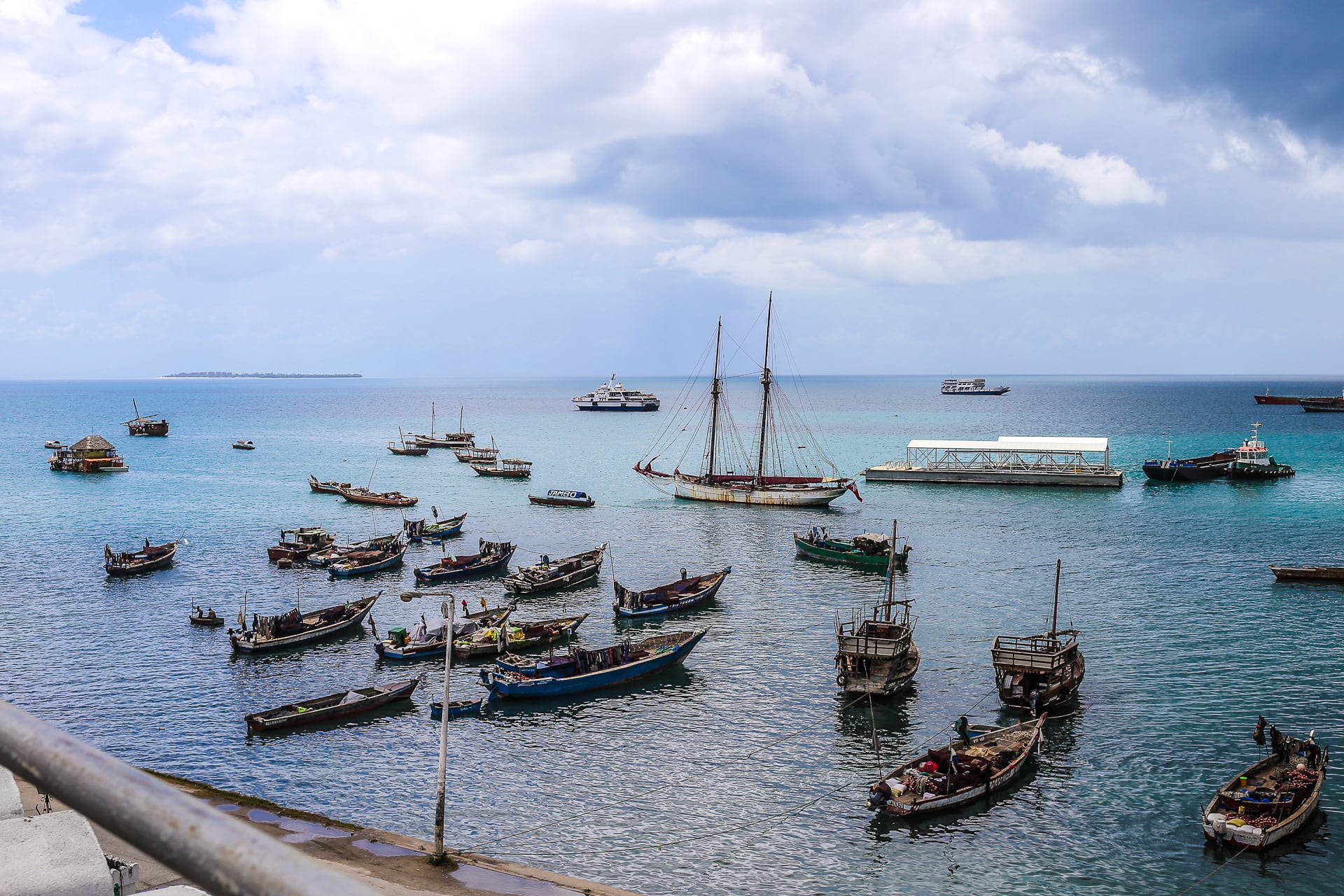
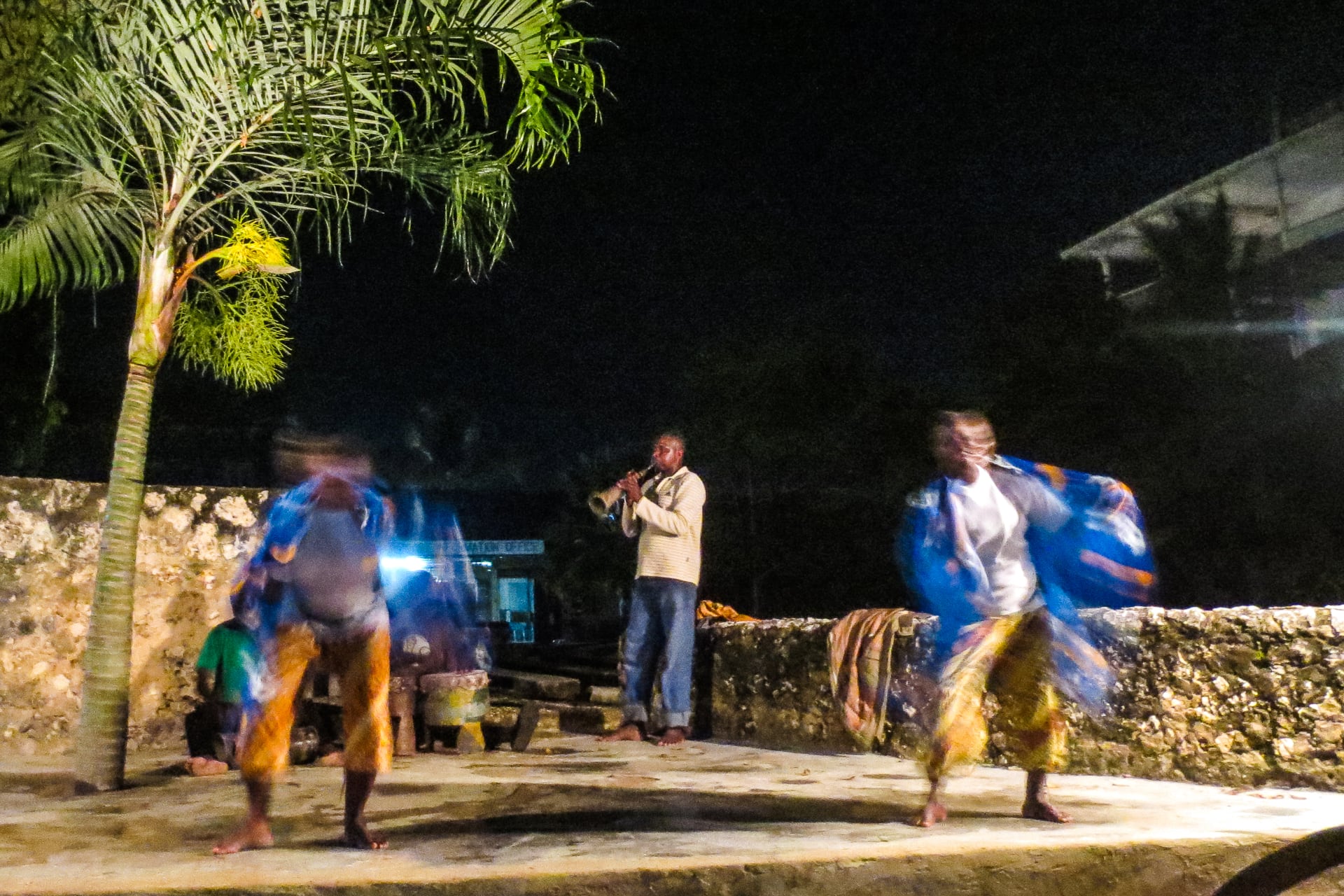
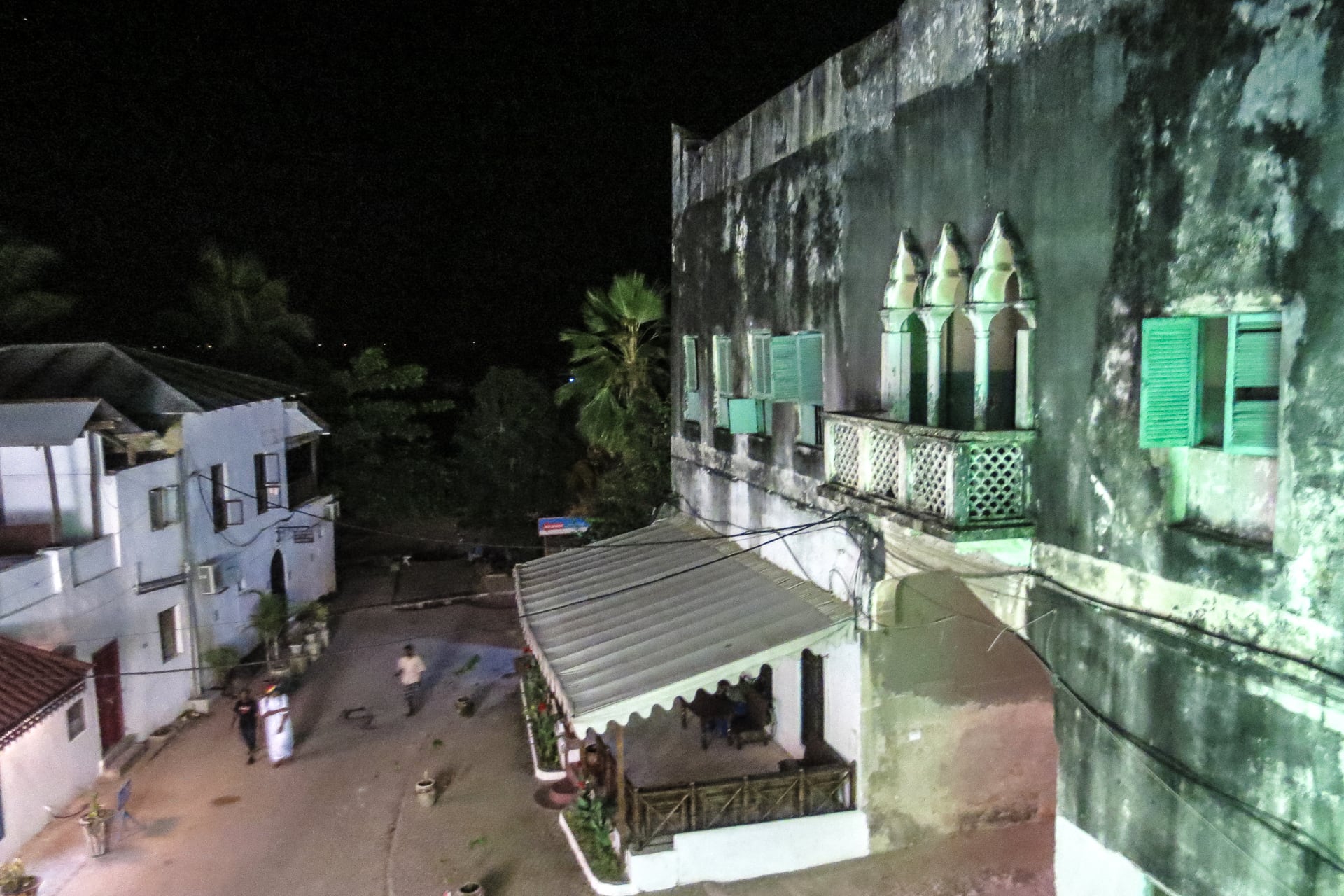
The Lebanese food looks yummy!